Elucidation of Microstructural and Mechanical Properties of Coconut Husk Mortar as a Sustainable Building Material for Ferrocement
Abstract
1. Introduction
2. Materials
3. Mortar Mix Proportions
4. Microstructural Studies
5. Experimental Programme
6. Results and Discussion
6.1. Microstructural Studies on Cement Mortar Constituents
6.2. Microstructural Studies on Mortar
6.2.1. SEM Analysis
6.2.2. EDX Analysis
6.2.3. XRD Analysis
6.3. Fresh Mortar Properties
6.4. Hardened Mortar Properties
6.4.1. Mechanical Properties
6.4.2. Splitting Tensile Strength
6.4.3. Flexural Strength
6.4.4. Impact Resistance
7. Conclusions
Author Contributions
Funding
Institutional Review Board Statement
Informed Consent Statement
Data Availability Statement
Acknowledgments
Conflicts of Interest
References
- Koehnken, L. Impacts of Sand Mining on Ecosystem Structures, Process and Biodivesiry in Rivers; World Wide Fund for Nature (WWF): Gland, Switzerland, 2018; ISBN 978-2-940529-88-9. [Google Scholar]
- Sand and Sustainability: Finding New Solutions for Environmental Governance of Global Sand Resources; United Nations Environment Programme: Nairobi, Kenya, 2019; ISBN 978-92-807-3751-6.
- Rising Demand for Sand Calls for Resource Governance, Rising Demand for Sand Calls for Resource Governance WWF. 2019. Available online: https://www.unep.org/news-and-stories/press-release/rising-demand-sand-calls-resource-governance (accessed on 7 May 2019).
- How the Demand for Sand Is Killing Rivers, How the Demand for Sand Is Killing Rivers. BBC News, 3 September 2017.
- Mishra, A. Rajasthan SEES Spurt in Demand for Manufactured Sand in Past Year, Rajasthan Sees Spurt in Demand for Manufactured Sand in Past Year. 2018. Available online: https://www.dnaindia.com (accessed on 3 September 2018).
- Chilamkurthy, K.; Marckson, A.V.; Chopperla, S.T.; Santhanam, M. A statistical overview of sand demand in Asia and Europe. In Proceedings of the International Conference UKIERE CTMC, Goa, India, 22–24 June 2016; Volume 16, pp. 1–15. [Google Scholar]
- Moudgil, M. How Sand Mining Impacts Ecosystem. India Water Portal. 2018. Available online: https://www.indiawaterportal.org/articles/how-sand-mining-impacts-ecosystem (accessed on 24 July 2018).
- Saviour, M.N. Environmental Impact of soil and sand mining: A review. Int. J. Environ. Sci. Tech. 2012, 1, 125–134. [Google Scholar]
- Challenges to Construction Materials Excellence: Sand Supply and Demand, Construction Plus Asia. 2017. Available online: https://www.constructionplusasia.com/hk/challenges-construction-materials-excellence-sand-supply-demand/ (accessed on 27 May 2017).
- Florea, M.; Ning, Z.; Brouwers, H. Activation of liberated concrete fines and their application in mortars. Constr. Build. Mater. 2014, 50, 1–12. [Google Scholar] [CrossRef]
- Ulsen, C.; Kahn, H.; Hawlitschek, G.; Masini, E.; Angulo, S.; John, V. Production of recycled sand from construction and demolition waste. Constr. Build. Mater. 2013, 40, 1168–1173. [Google Scholar] [CrossRef]
- Singh, M.; Srivastava, A.; Bhunia, D. An investigation on effect of partial replacement of cement by waste marble slurry. Constr. Build. Mater. 2017, 134, 471–488. [Google Scholar] [CrossRef]
- Naaman, A.E. Ferrocement and thin reinforced cement composites: Five decades of progress. J. Ferrocem. 2006, 36, 741. [Google Scholar]
- Naaman, A.E. Ferrocement housing: Toward integrated high technology solutions. J. Ferrocem. 1989, 19, 141–149. [Google Scholar]
- Naaman, A.E. Prospect in ferrocement materials, applications and technology. J. Ferrocem. 1985, 15, 165–167. [Google Scholar]
- Building a Ferrocement Water Tank, Institute of Rural Development and Women’s Development Training Programme. The University of the South Pacific. 2022. Available online: https://www.ircwash.org/resources/building-ferrocement-water-tank (accessed on 12 June 2022).
- Clarke, R.P.; Sharma, A.K. The Earthquake Strengthening of Single-Storey Unreinforced Block Masonry Houses in Trinidad and Tobago Using Ferrocement. International Ferrocement Society Representative for Trinidad and Tobago. Public Information Series/Earthquakes. 1977. Available online: https://richardpclarke.tripod.com/hurri/manual.pdf (accessed on 15 May 2022).
- Shafigh, P.; Mahmud, H.B.; Jumaat, M.Z.; Zargar, M. Agricultural wastes as aggregate in concrete mixtures—A review. Constr. Build. Mater. 2014, 53, 110–117. [Google Scholar] [CrossRef]
- Prusty, J.K.; Patro, S.K.; Basarkar, S. Concrete using agro-waste as fine aggregate for sustainable built environment—A review. Int. J. Sustain. Built Environ. 2016, 5, 312–333. [Google Scholar] [CrossRef]
- Pereira, C.; Savastano, H.; Payá, J.; Santos, S.; Borrachero, M.; Monzó, J.; Soriano, L. Use of highly reactive rice husk ash in the production of cement matrix reinforced with green coconut fiber. Ind. Crop. Prod. 2013, 49, 88–96. [Google Scholar] [CrossRef]
- Memon, S.A.; Javed, U.; Khushnood, R.A. Eco-friendly utilization of corncob ash as partial replacement of sand in concrete. Constr. Build. Mater. 2018, 195, 165–177. [Google Scholar] [CrossRef]
- Rafieizonooz, M.; Mirza, J.; Salim, M.R.; Hussin, M.W.; Khankhaje, E. Investigation of coal bottom ash and fly ash in concrete as replacement for sand and cement. Constr. Build. Mater. 2016, 116, 15–24. [Google Scholar] [CrossRef]
- Wang, H.-Y.; Tsai, S.-L.; Hung, C.-C.; Jian, T.-Y. Research on engineering properties of cement mortar adding stainless steel reduction slag and pozzolanic materials. Case Stud. Constr. Mater. 2022, 16, 1–17. [Google Scholar] [CrossRef]
- Pichór, W.; Kamiński, A.; Szołdra, P.; Frąc, M. Lightweight Cement Mortars with Granulated Foam Glass and Waste Perlite Addition. Adv. Civ. Eng. 2019, 2019, 1–9. [Google Scholar] [CrossRef]
- Gameiro, F.; de Brito, J.; da Silva, D.C. Durability performance of structural concrete containing fine aggregates from waste generated by marble quarrying industry. Eng. Struct. 2013, 59, 654–662. [Google Scholar] [CrossRef]
- Silva, J.; De Brito, J.; Veiga, R. Incorporation of fine ceramics in mortars. Constr. Build. Mater. 2009, 23, 556–564. [Google Scholar] [CrossRef]
- Lam, M.N.-T.; Nguyen, D.-T.; Nguyen, D.-L. Potential use of clay brick waste powder and ceramic waste aggregate in mortar. Constr. Build. Mater. 2021, 313, 125516. [Google Scholar] [CrossRef]
- Corinaldesi, V.; Moriconi, G.; Naik, T.R. Characterization of marble powder for its use in mortar and concrete. Constr. Build. Mater. 2010, 24, 113–117. [Google Scholar] [CrossRef]
- Gunasekaran, K.; Annadurai, R.; Kumar, P.S. Study on reinforced lightweight coconut shell concrete beam behavior under flexure. Mater. Des. 2013, 46, 157–167. [Google Scholar] [CrossRef]
- Gunasekaran, K.; Annadurai, R.; Kumar, P. Long term study on compressive and bond strength of coconut shell aggregate concrete. Constr. Build. Mater. 2012, 28, 208–215. [Google Scholar] [CrossRef]
- Ramasubramani, R.; Gunasekaran, K. Sustainable Alternate Materials for Concrete Production from Renewable Source and Waste. Sustainability 2021, 13, 1204. [Google Scholar] [CrossRef]
- Gunasekaran, K.; Kumar, P.S.; Lakshmipathy, M. Study on properties of coconut shell as an aggregate for concrete. ICI J. 2011, 12, 27–33. [Google Scholar]
- Gunasekaran, K.; Kumar, P.; Lakshmipathy, M. Mechanical and bond properties of coconut shell concrete. Constr. Build. Mater. 2010, 25, 92–98. [Google Scholar] [CrossRef]
- Gunasekaran, K.; Annadurai, R.; Kumar, P.S. A study on some durability properties of coconut shell aggregate concrete. Mater. Struct. 2013, 48, 1253–1264. [Google Scholar] [CrossRef]
- IS 12269; Ordinary Portland Cement, 53 Grade—Specification. Bureau of Indian Standards: New Delhi, India, 2013.
- IS 383; Coarse and Fine Aggregate for Concrete—Specification. Bureau of Indian Standards: New Delhi, India, 2016.
- ACI 549.1R-97; Guide for the Design, Construction and Repair of Ferrocement. ACI Committee 549: Farmington Hills, MI, USA, 1997.
- ACI 549.1R-93; State of the Art Report on Ferrocement. ACI Committee 549: Farmington Hills, MI, USA, 1999.
- Ferrocement Technology. In WRD Handbook; Maharashtra Engineering Research Institute: Nashik, India, 2018.
- Mehta, P.K.; Paulo, J.M.M. Concrete, Microstructure, Properties and Materials, 3rd ed.; Tata McGraw Hill Education Private Limited: New Delhi, India, 2006; Fourth reprint 2010. [Google Scholar]
- Mollah, M.Y.A.; Hess, T.R.; Cocke, D.L. Surface and bulk studies of leached and unleached fly ash using XPS, SEM, EDS and FTIR techniques. Cem. Concr. Res. 1994, 24, 109–118. [Google Scholar] [CrossRef]
- Stutzman, P. Direct determination of phases in portland cements by quantitative X-ray powder diffraction. NIST Tech. Note 2010, 1692, 59. [Google Scholar]
- IS 5512:1983; Flow Table for Use in Tests of Hydraulic Cements and Pozzolanic Materials—Specification. Bureau of Indian Standards: New Delhi, India, 2004.
- ASTM C1437-20; Standard Test Method for Flow of Hydraulic Cement Mortar. ASTM International Standards: West Conshohocken, PA, USA, 2021.
- ASTM C143/C143M-10; Standard Test Method for Slump of Hydraulic-Cement Concrete. ASTM International Standards: West Conshohocken, PA, USA, 2007.
- ASTM C109/C109M-02; Standard Test Method for Compressive Strength of Hydraulic Cement Mortars. ASTM International Standards: West Conshohocken, PA, USA, 2002.
- ASTM C496/C496-11; Standard Test Method for Splitting Tensile Strength of Cylindrical Concrete Specimens. ASTM International Standards: West Conshohocken, PA, USA, 2004.
- ASTM C348-02; Standard Test Method for Flexural Strength of Hydraulic-Cement Mortars. ASTM International Standards: West Conshohocken, PA, USA, 2002.
- ACI 544.2R-89; Measurement of Properties of Fiber Reinforced Concrete. ACI Committee 544: Farmington Hills, MI, USA, 1999.
- Mohit, M.; Sharifi, Y. Thermal and microstructure properties of cement mortar containing ceramic waste powder as alternative cementitious materials. Constr. Build. Mater. 2019, 223, 643–656. [Google Scholar] [CrossRef]
- Prasad, D.D.; Kishore, R. Fourier transformed-infrared spectroscopy (FTIR) studies on the concrete/cement mortar mass made of cent percentage recycled coarse aggregate and fine aggregate. Int. J. Adv. Res. Eng. Technol. 2021, 12, 387–400. [Google Scholar] [CrossRef]
- Muttashar, H.L.; Ali, N.B.; Ariffin, M.A.M.; Hussin, M.W. Microstructures and physical properties of waste garnets as a promising construction materials. Case Stud. Constr. Mater. 2018, 8, 87–96. [Google Scholar] [CrossRef]
- Brekailo, F.; Pereira, E.; Pereira, E.; Farias, M.M.; Medeiros-Junior, R.A. Red ceramic and concrete waste as replacement of portland cement: Microstructure aspect of eco-mortar in external sulfate attack. Clean. Mater. 2021, 3, 100034. [Google Scholar] [CrossRef]
- Singh, M.; Siddique, R. Strength properties and micro-structural properties of concrete containing coal bottom ash as partial replacement of fine aggregate. Constr. Build. Mater. 2014, 50, 246–256. [Google Scholar] [CrossRef]
- Ortega, J.M.; Letelier, V.; Solas, C.; Moriconi, G.; Climent, M.; Sánchez, I. Long-term effects of waste brick powder addition in the microstructure and service properties of mortars. Constr. Build. Mater. 2018, 182, 691–702. [Google Scholar] [CrossRef]
- Stutzman, P.E.; Bullard, J.W.; Feng, P. Phase Analysis of Portland Cement by Combined Quantitative X-ray Powder Diffraction and Scanning Electron Microscopy. J. Res. Natl. Inst. Stand. Technol. 2016, 121, 47–107. [Google Scholar] [CrossRef] [PubMed]
- IS 4031(Part 7)-1988; Methods of Physical Test for Hydraulic Cement. Bureau of Indian Standards: New Delhi, India, 2005.
- Liao, Y.; Wang, X.; Wang, L.; Yin, Z.; Da, B.; Chen, D. Effect of waste oyster shell powder content on properties of cement-metakaolin mortar. Case Stud. Constr. Mater. 2022, 16, 1–13. [Google Scholar] [CrossRef]
- Bouvet, A.; Ghorbel, E.; Bennacer, R. The mini-conical slump flow test: Analysis and numerical study. Cem. Concr. Res. 2010, 40, 1517–1523. [Google Scholar] [CrossRef]
- Zhou, B.; Zhang, M.; Wang, L.; Ma, G. Experimental study on mechanical property and microstructure of cement mortar reinforced with elaborately recycled GFRP fiber. Cem. Concr. Compos. 2020, 117, 103908. [Google Scholar] [CrossRef]
- Ede, A.N.; Agbede, J.O. Use of coconut husk fiber for improved compressive and flexural strength of con-crete. Int. J. Sci. Eng. Res. 2015, 6, 968–974. [Google Scholar]
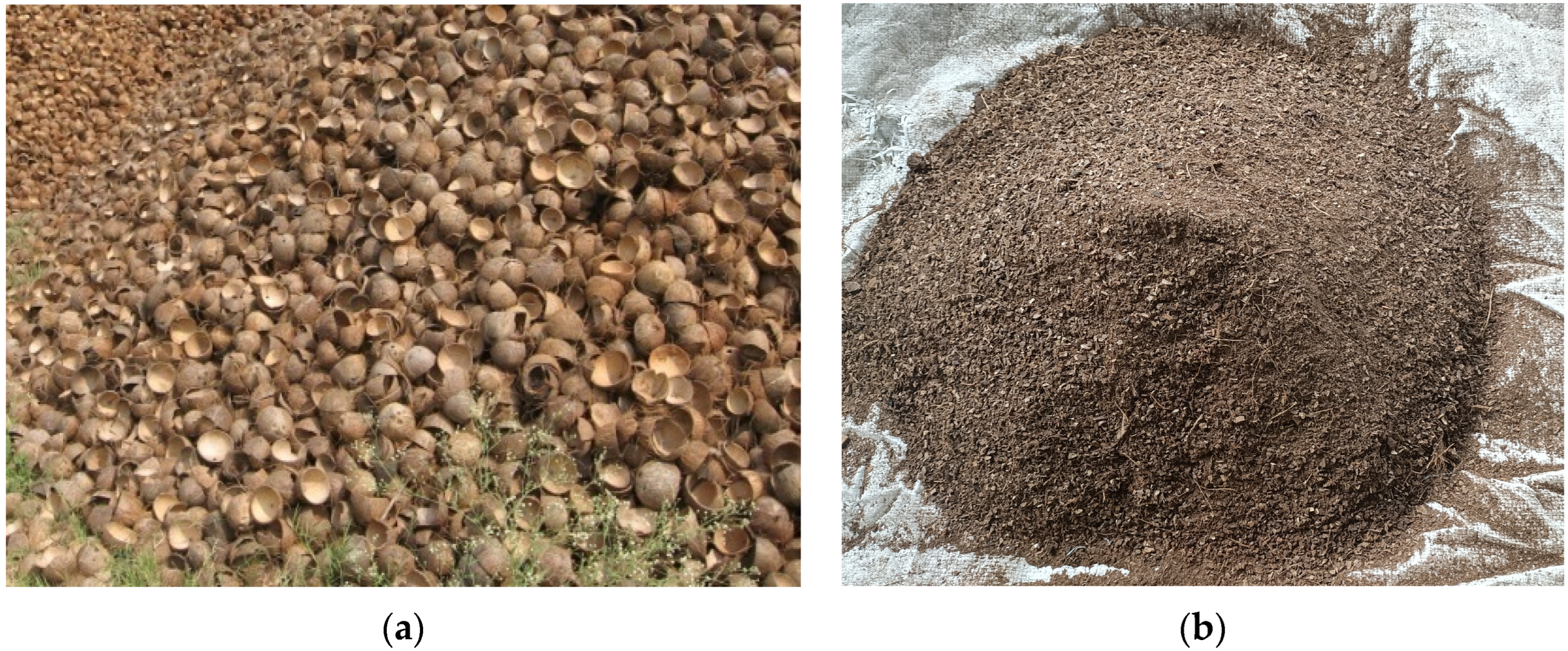
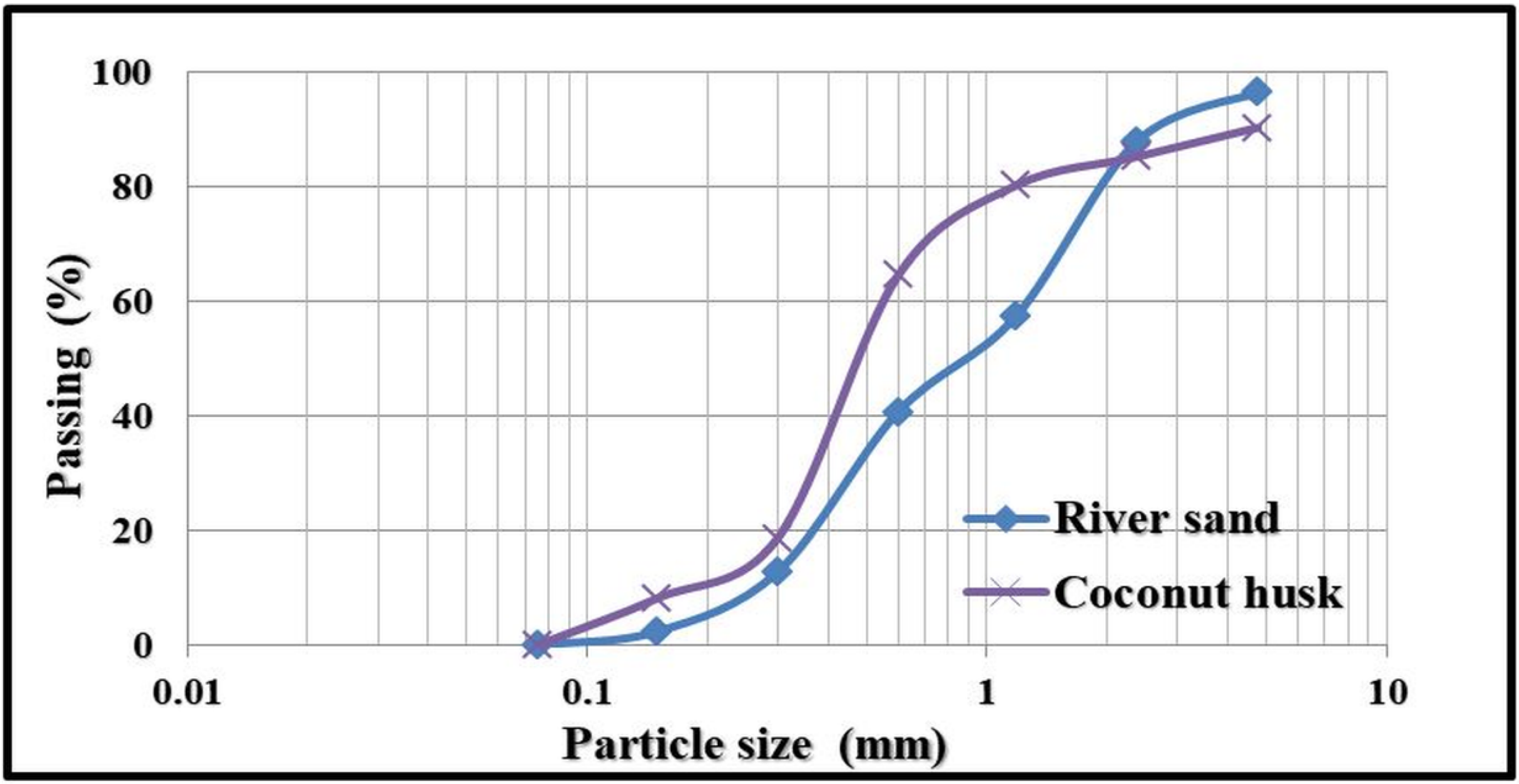
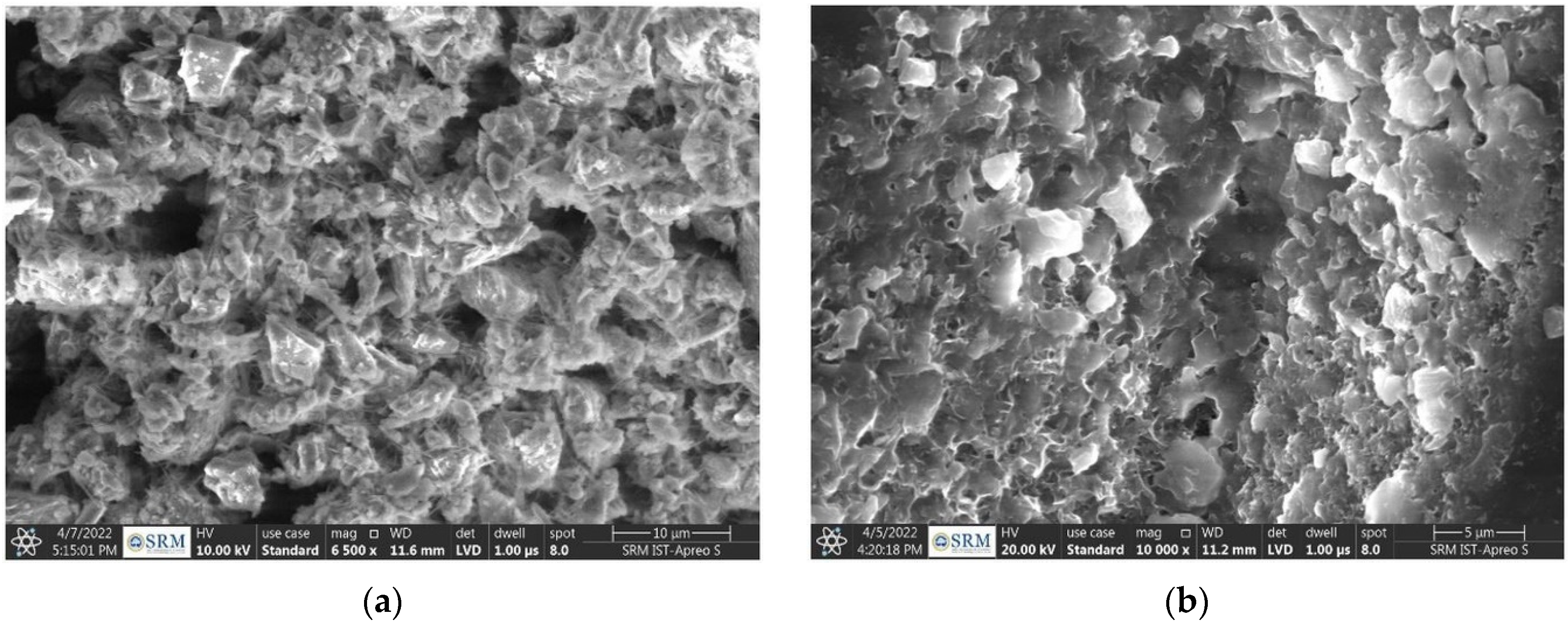
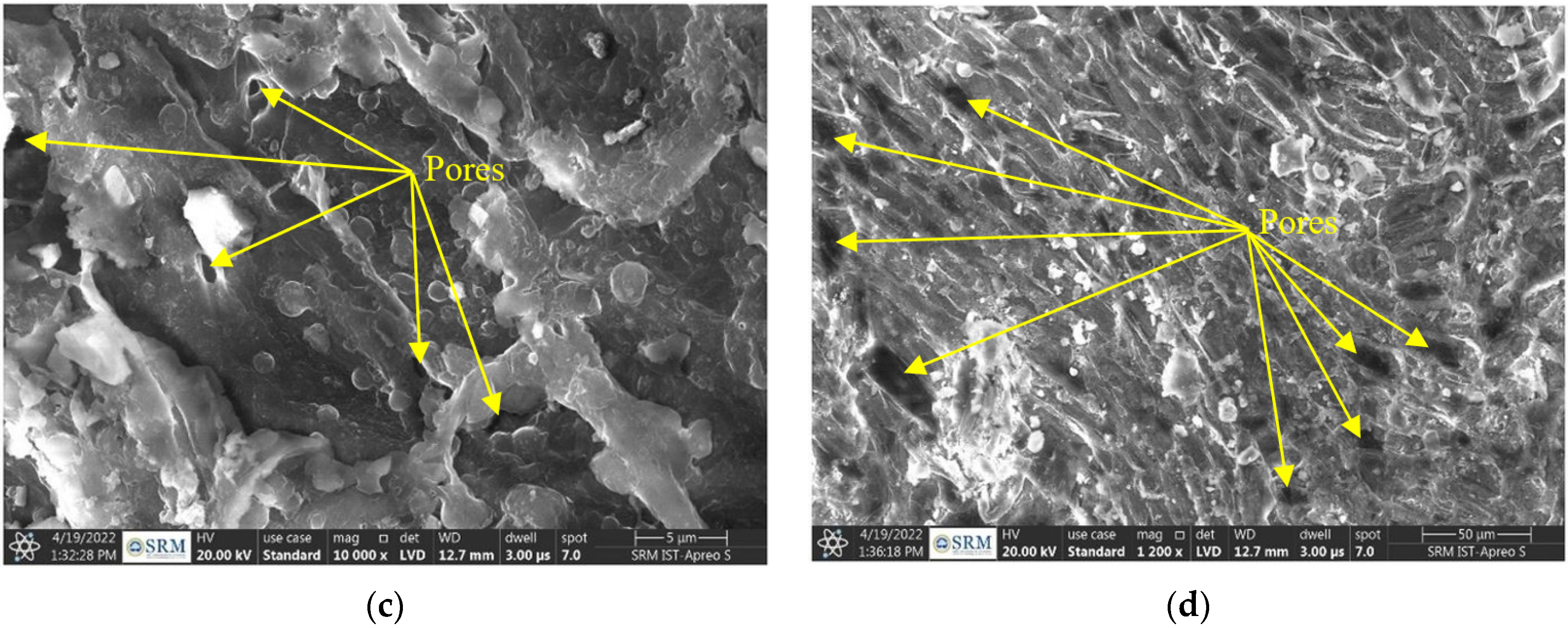
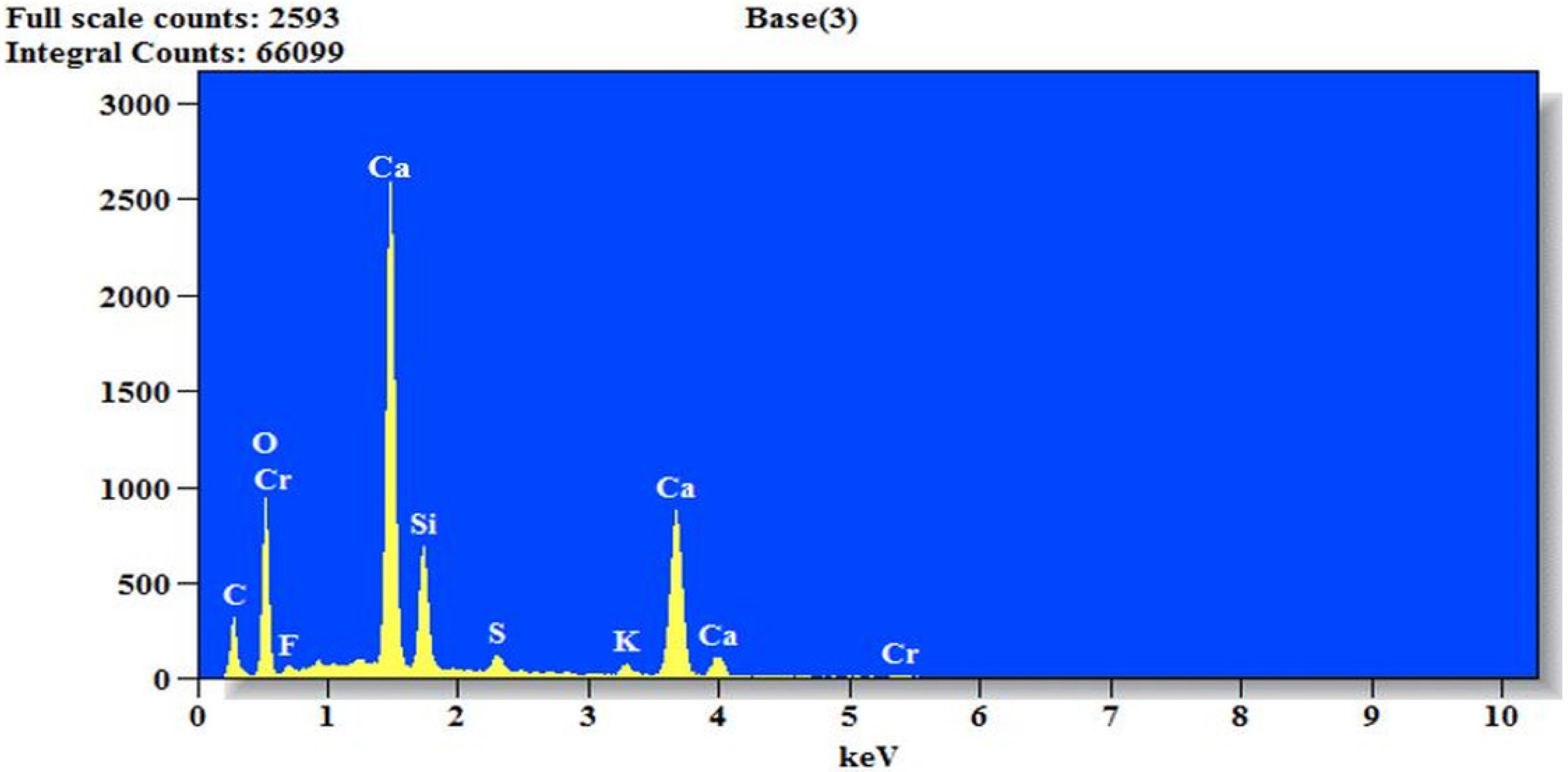
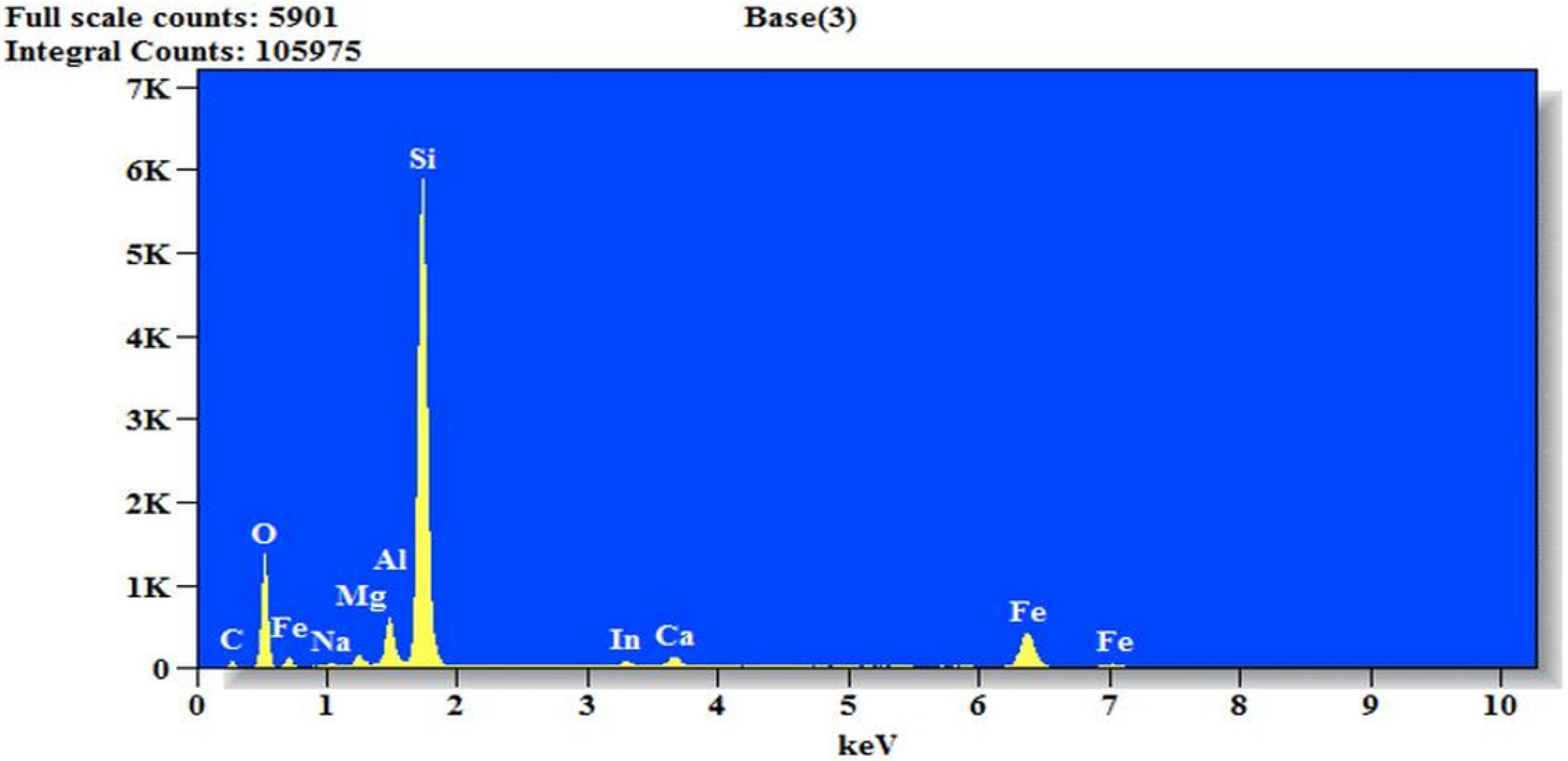
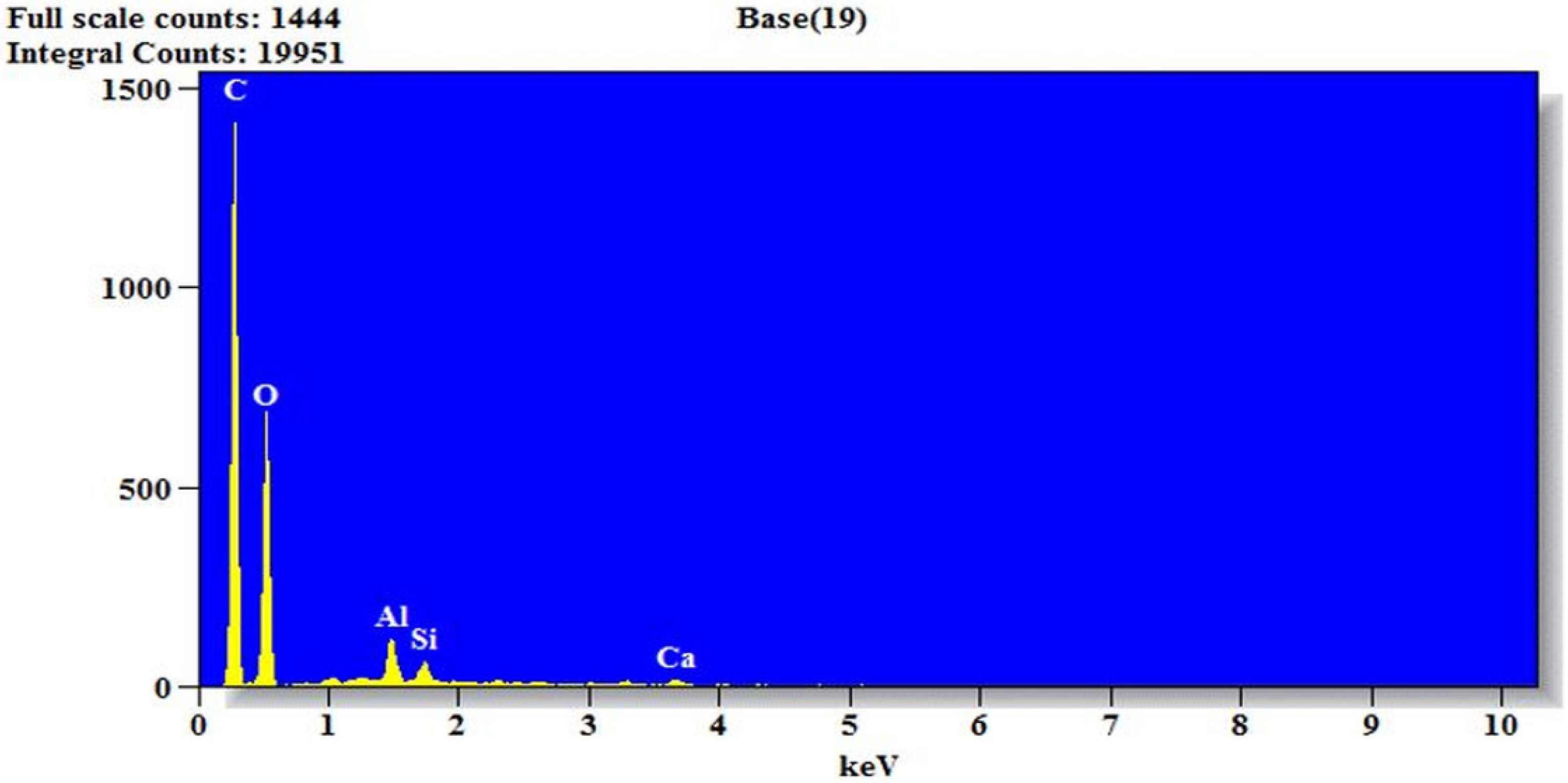
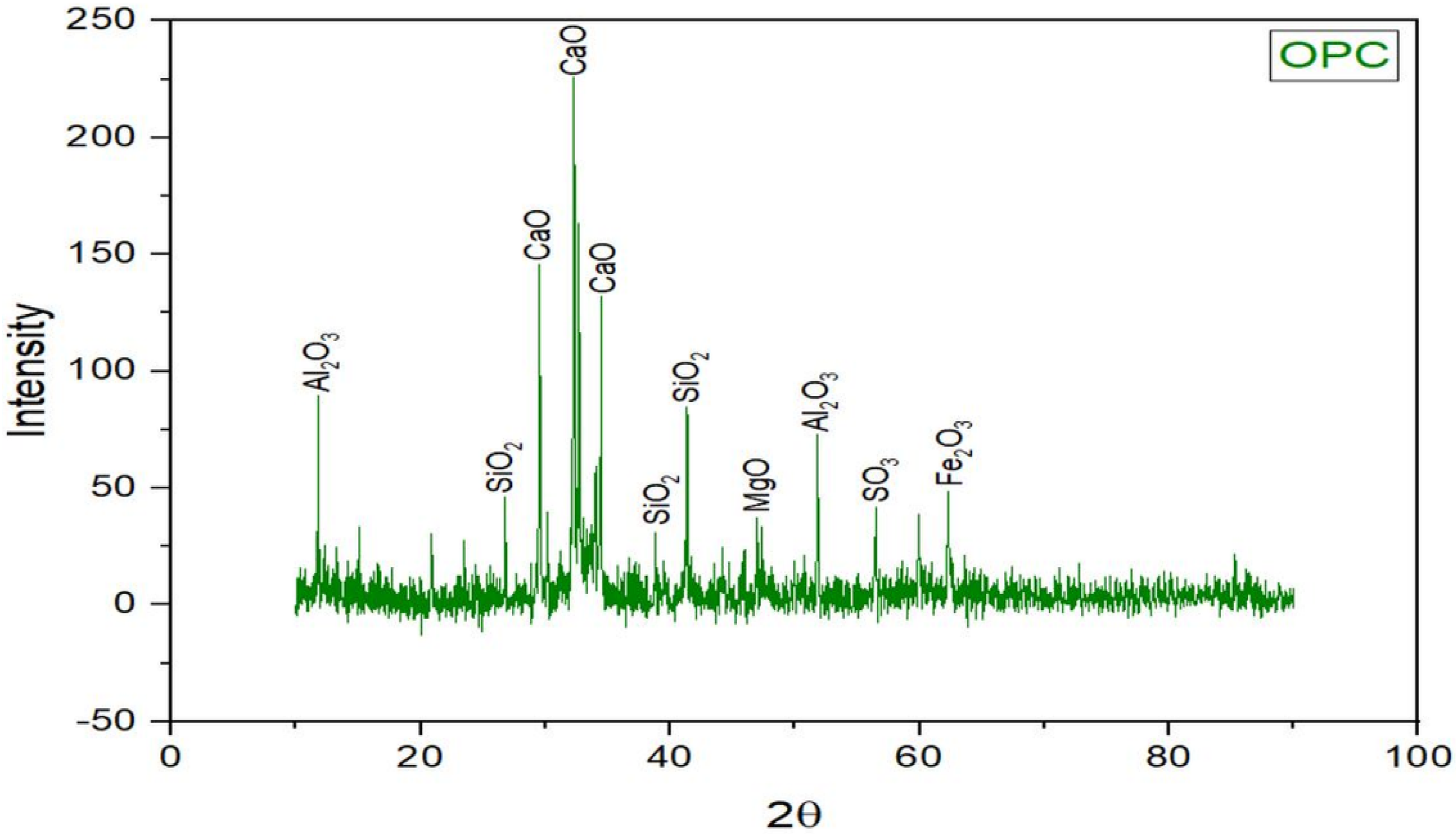
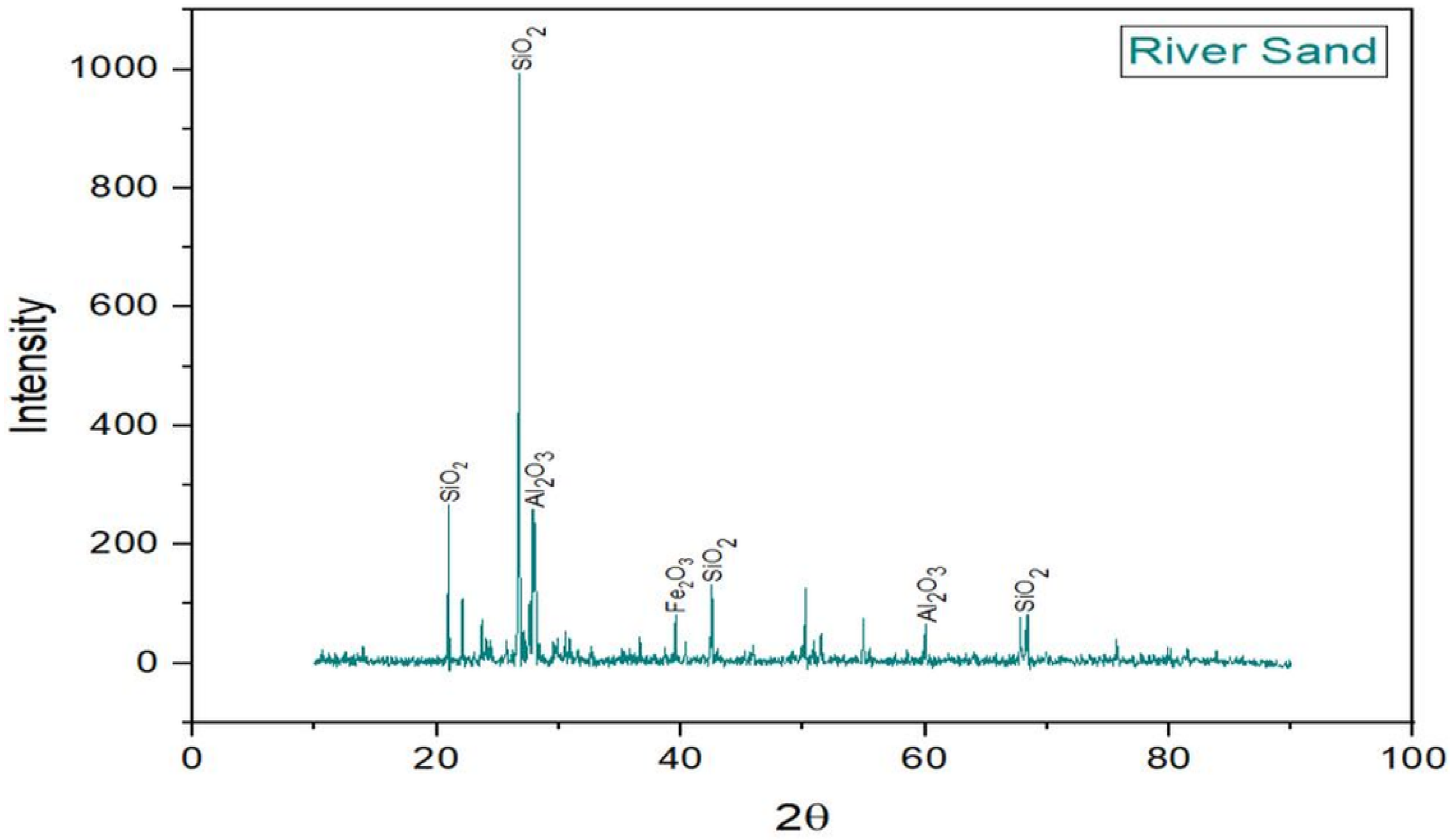
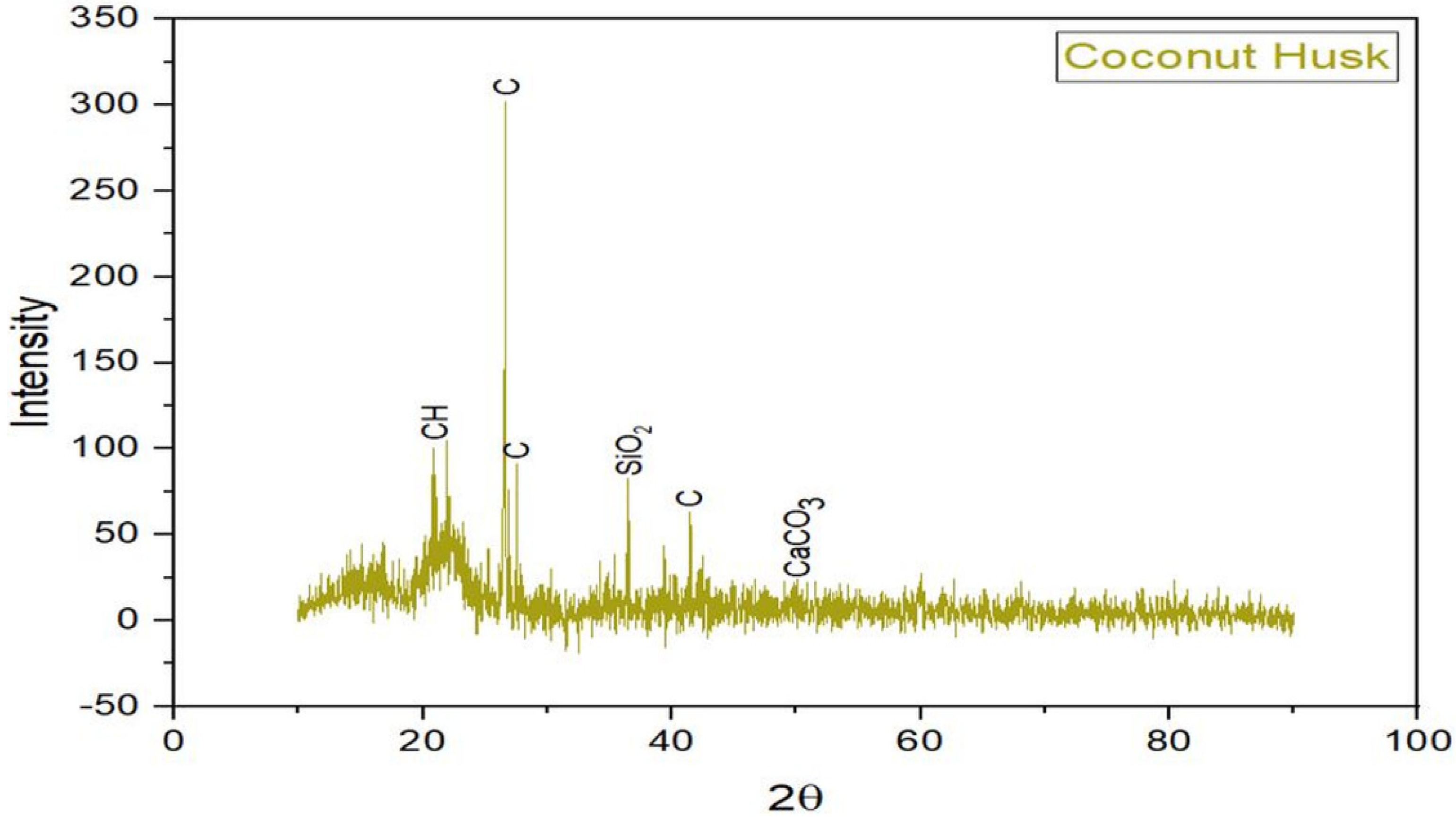
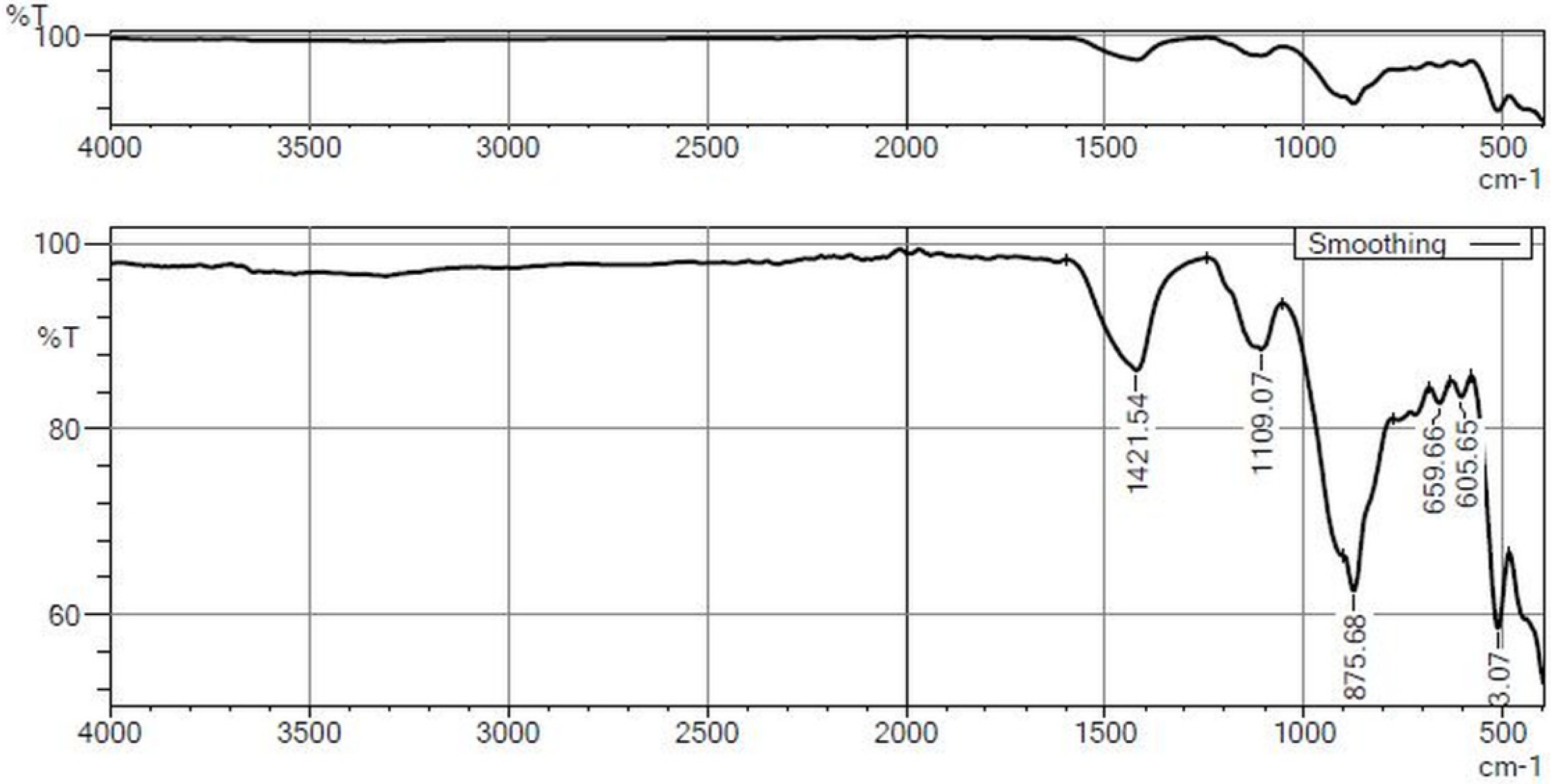
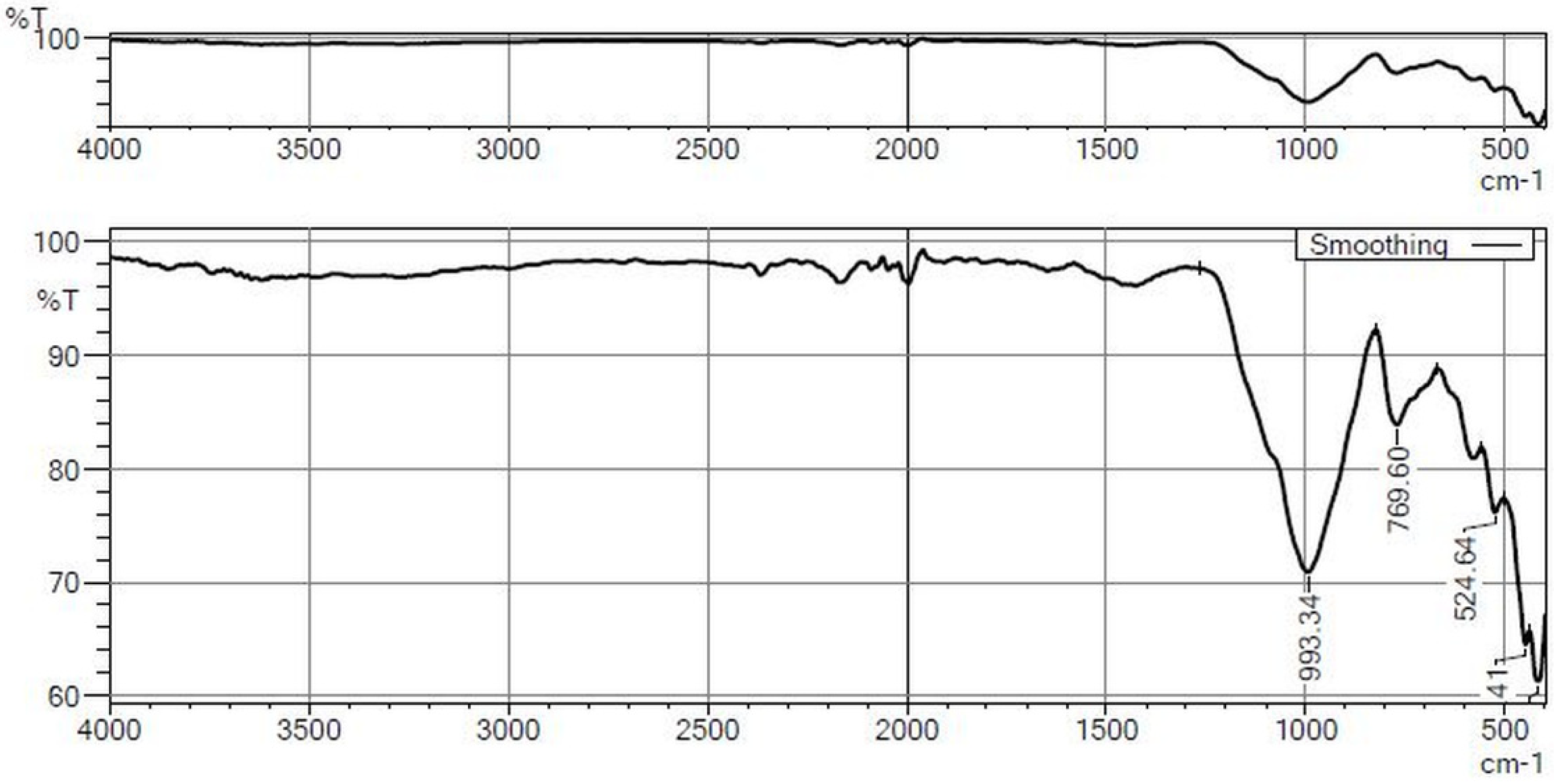
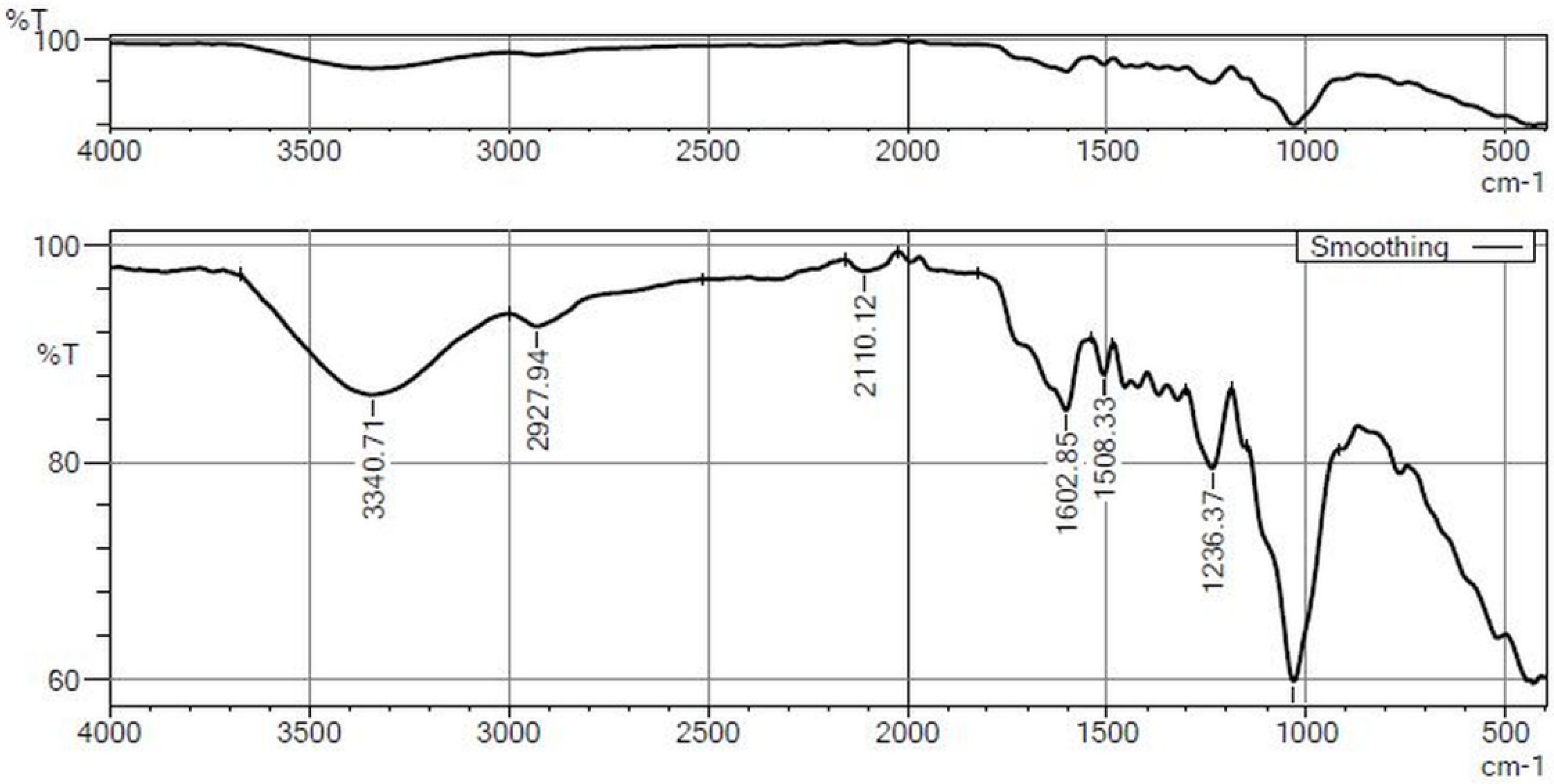
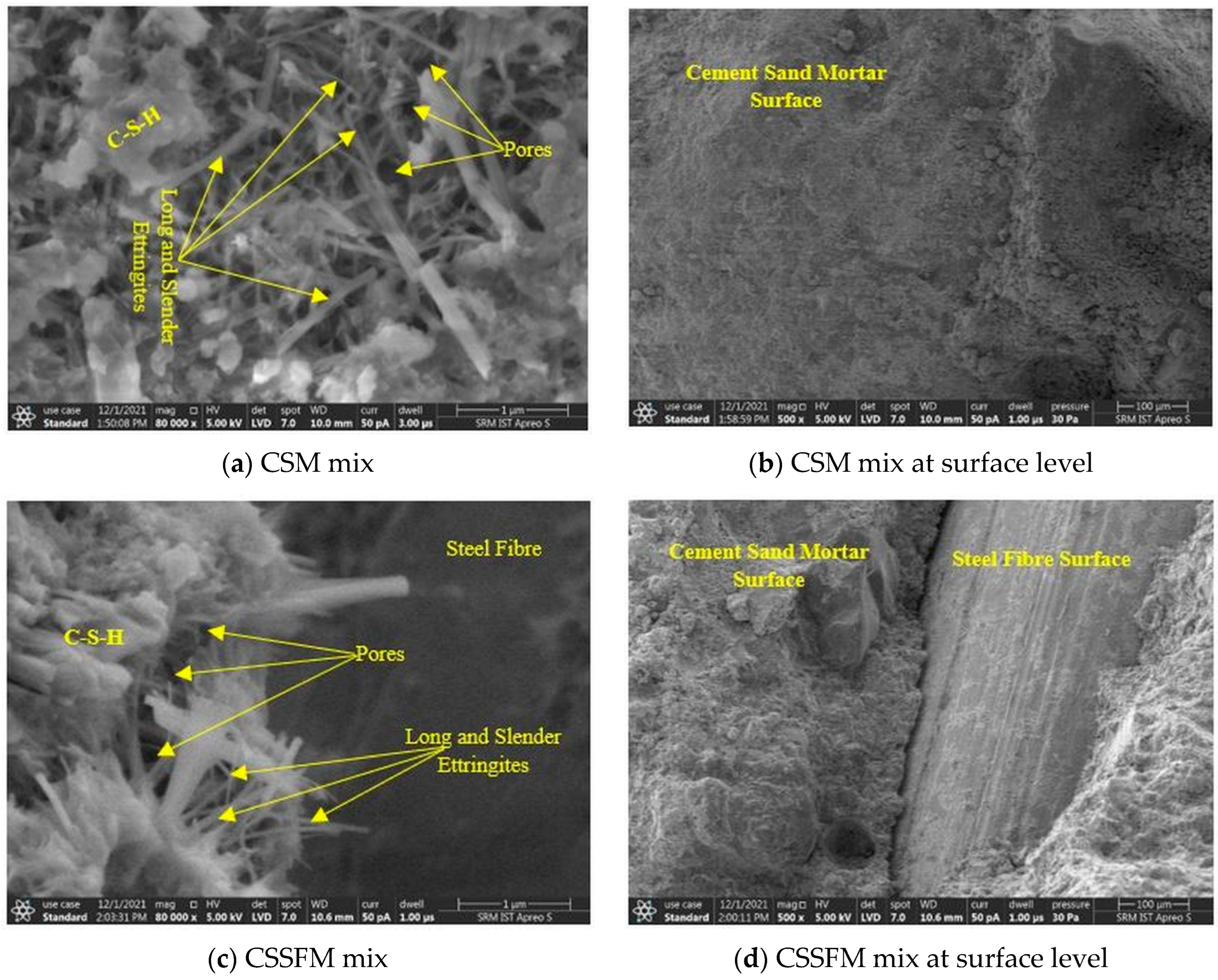

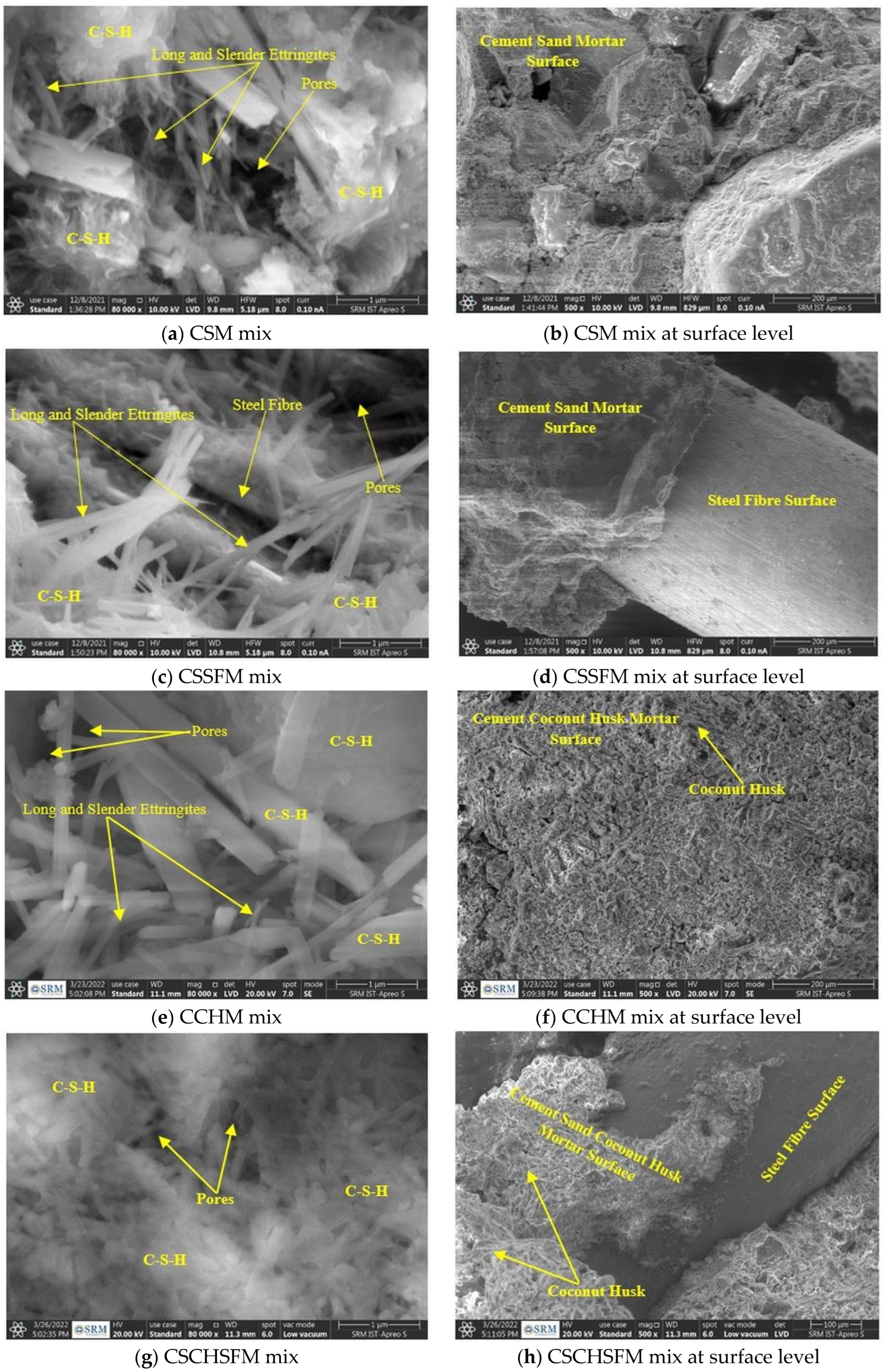
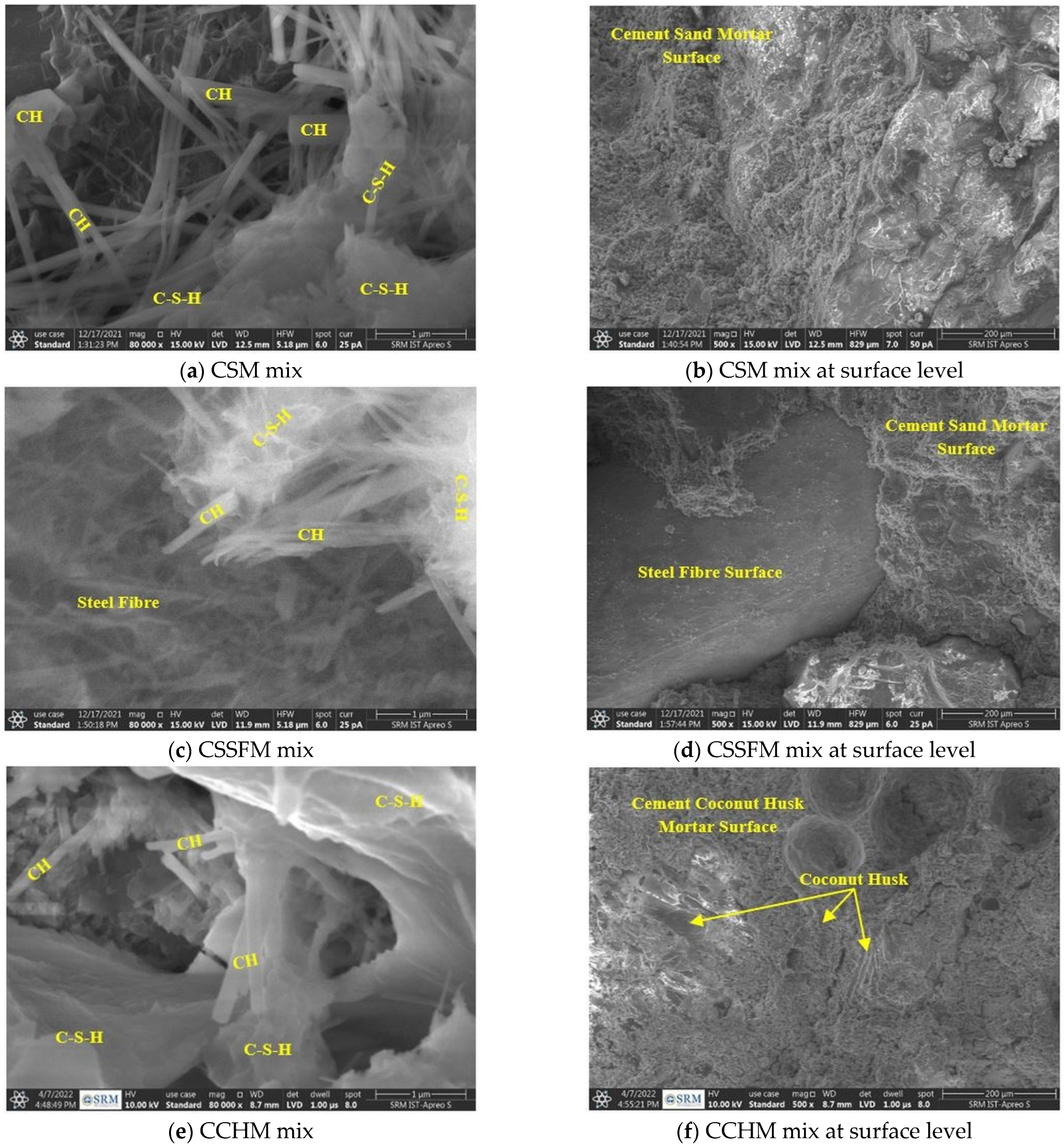
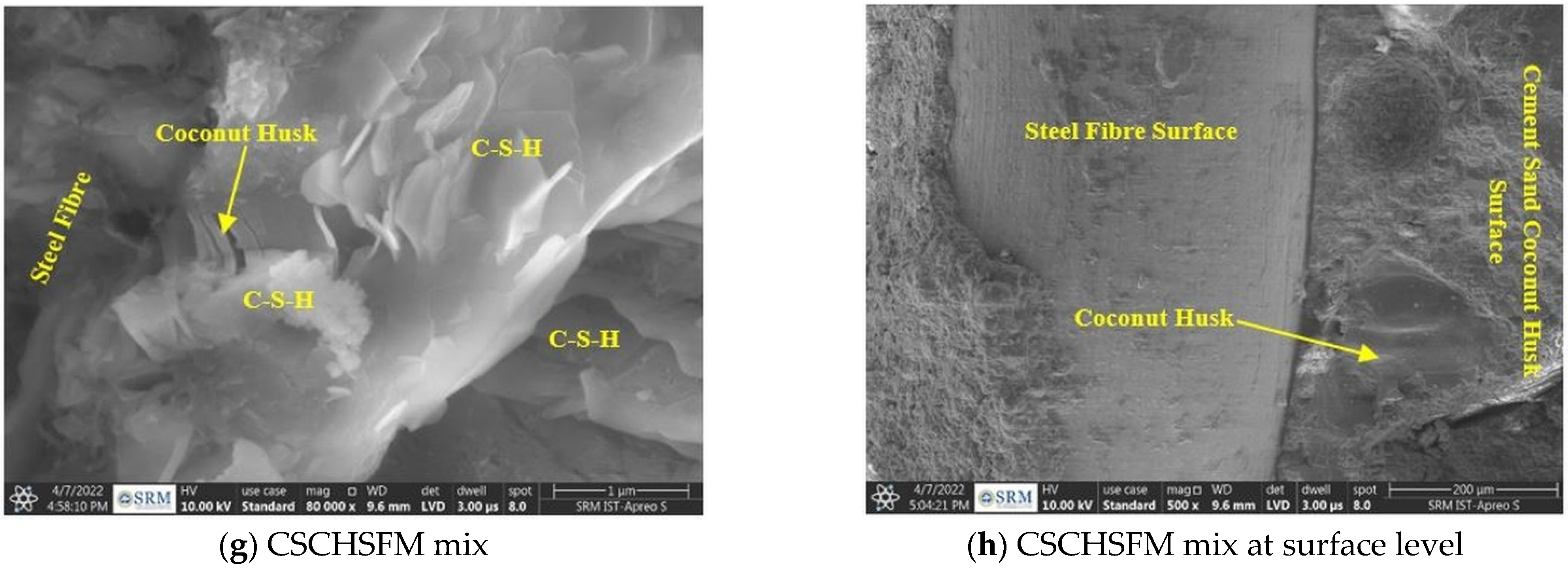

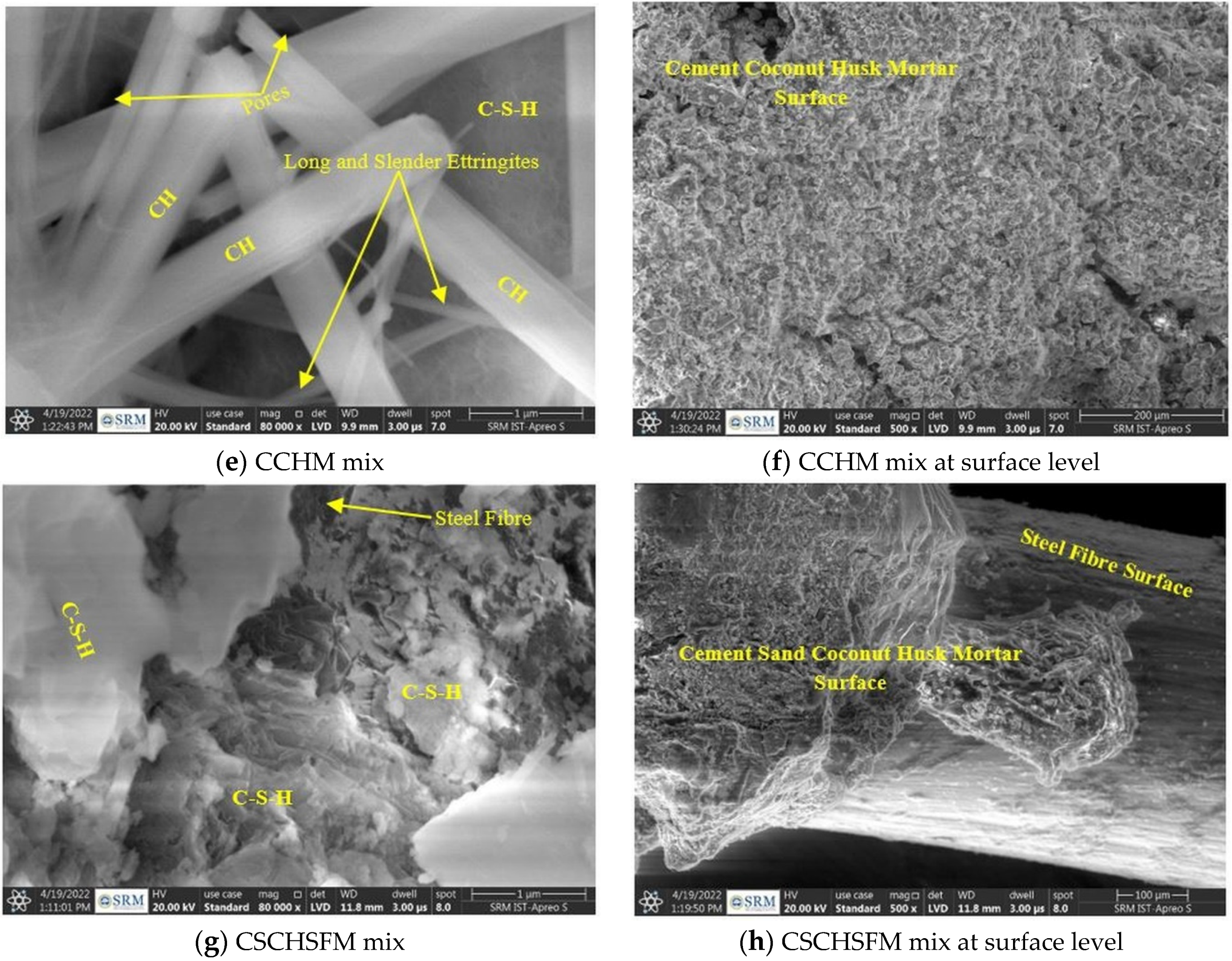
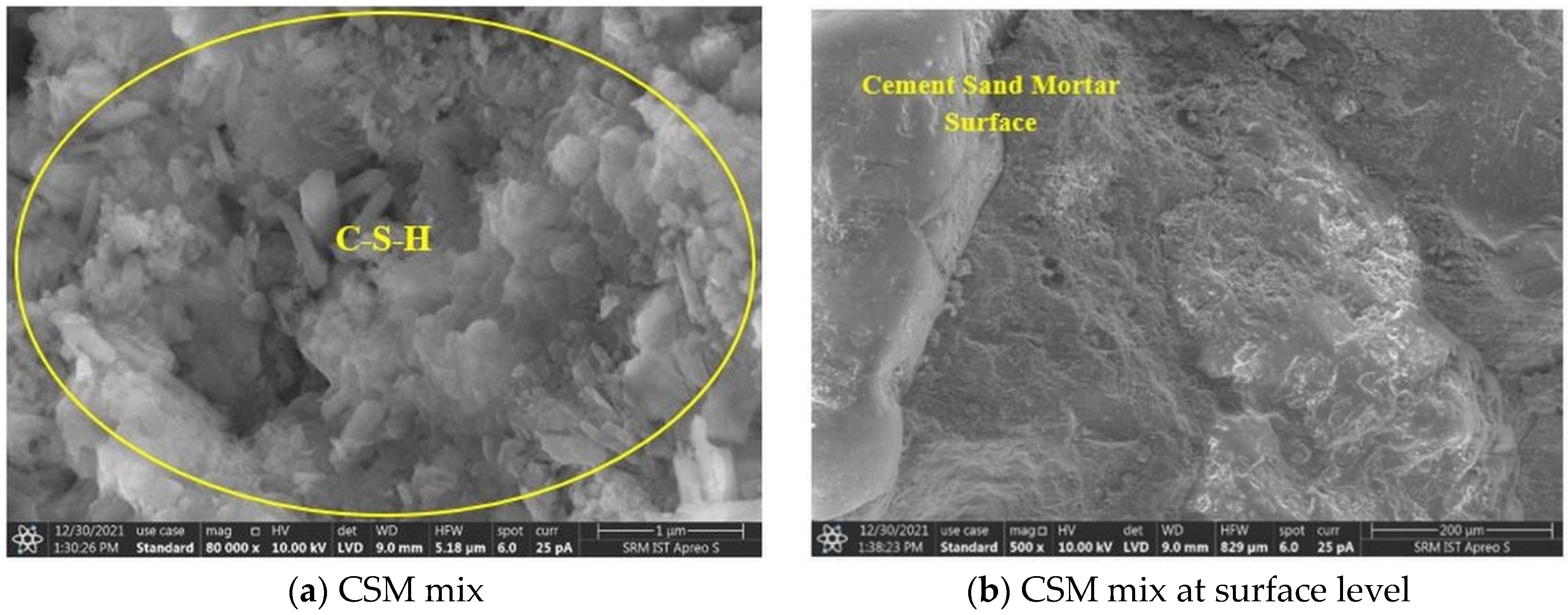
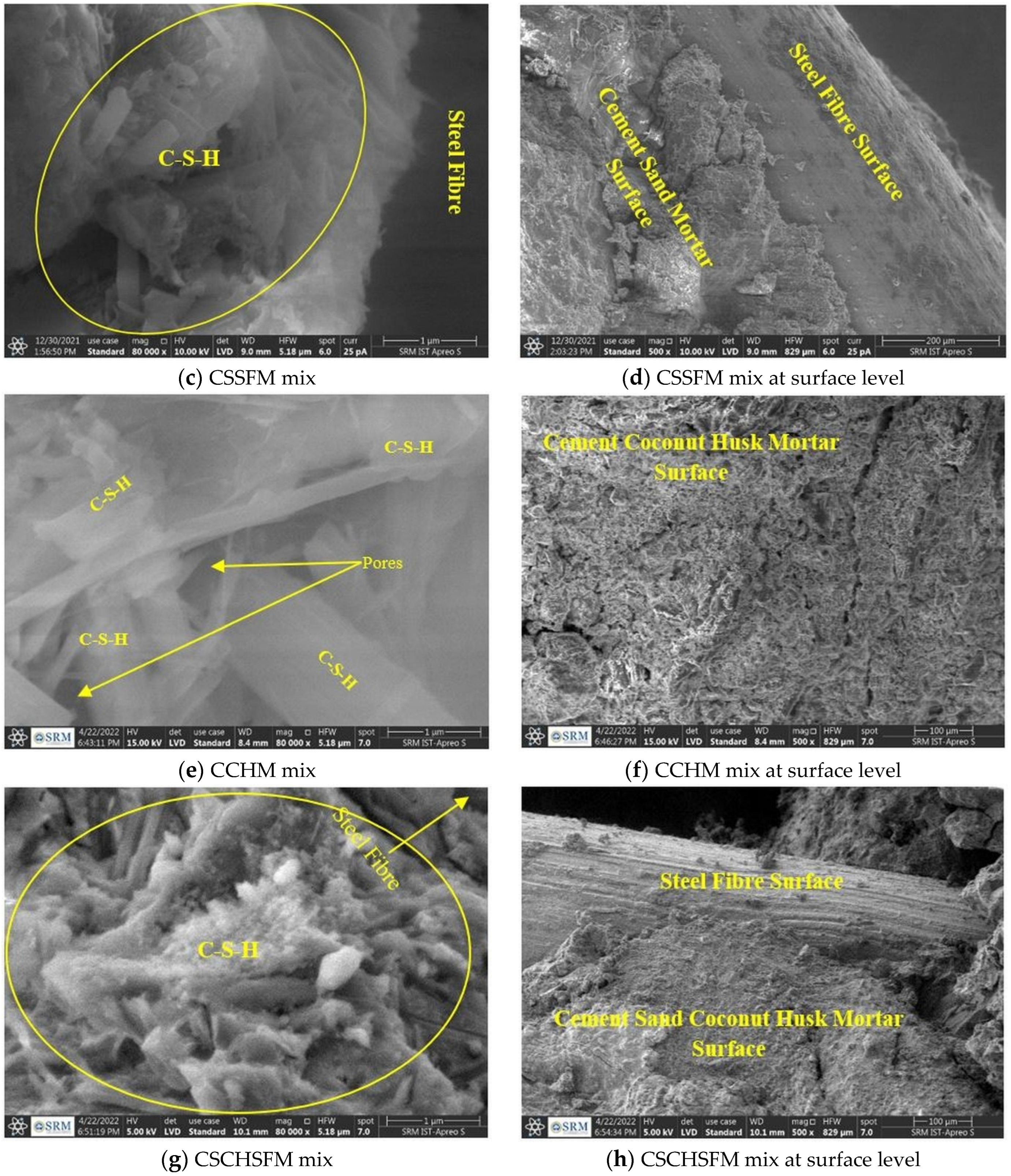
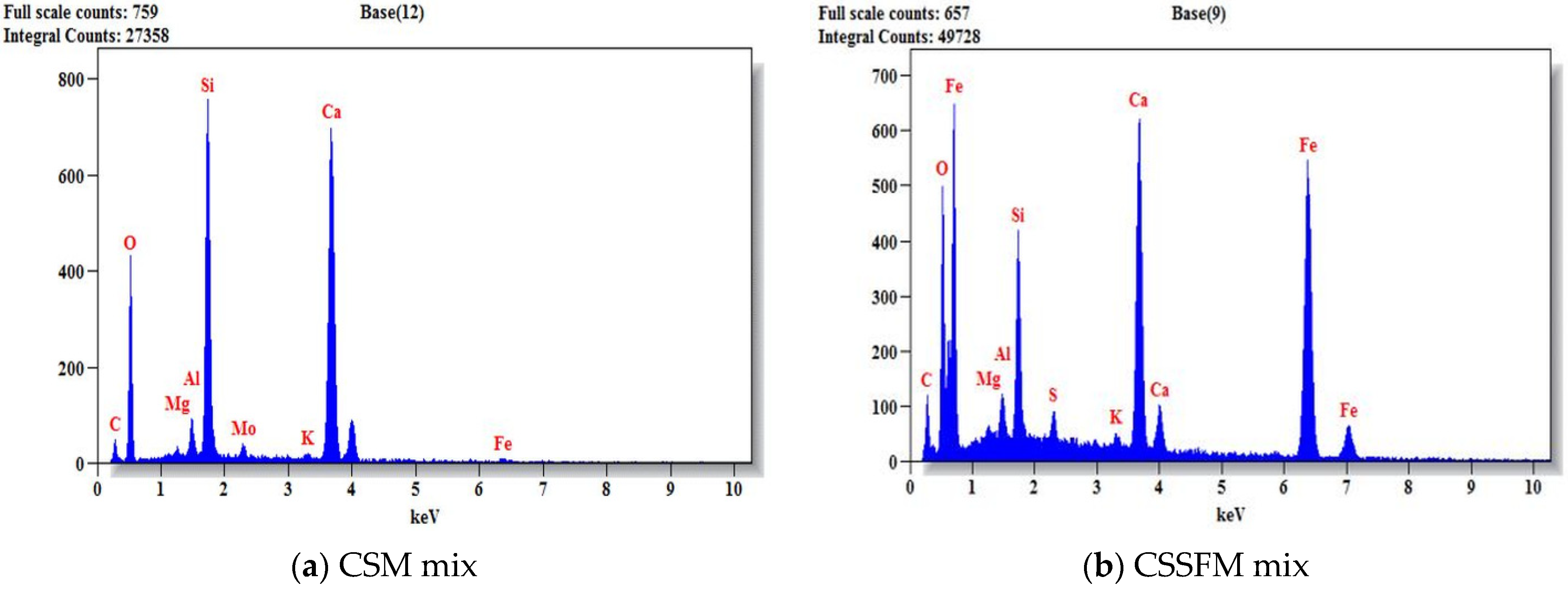
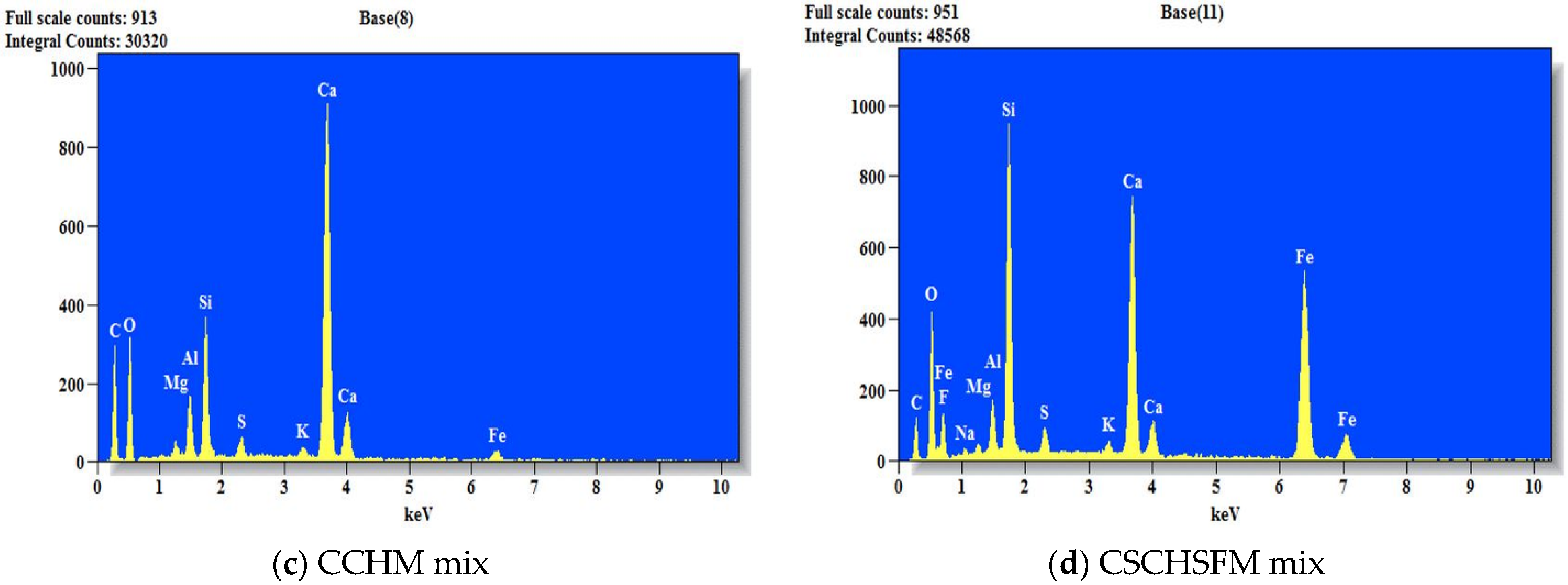
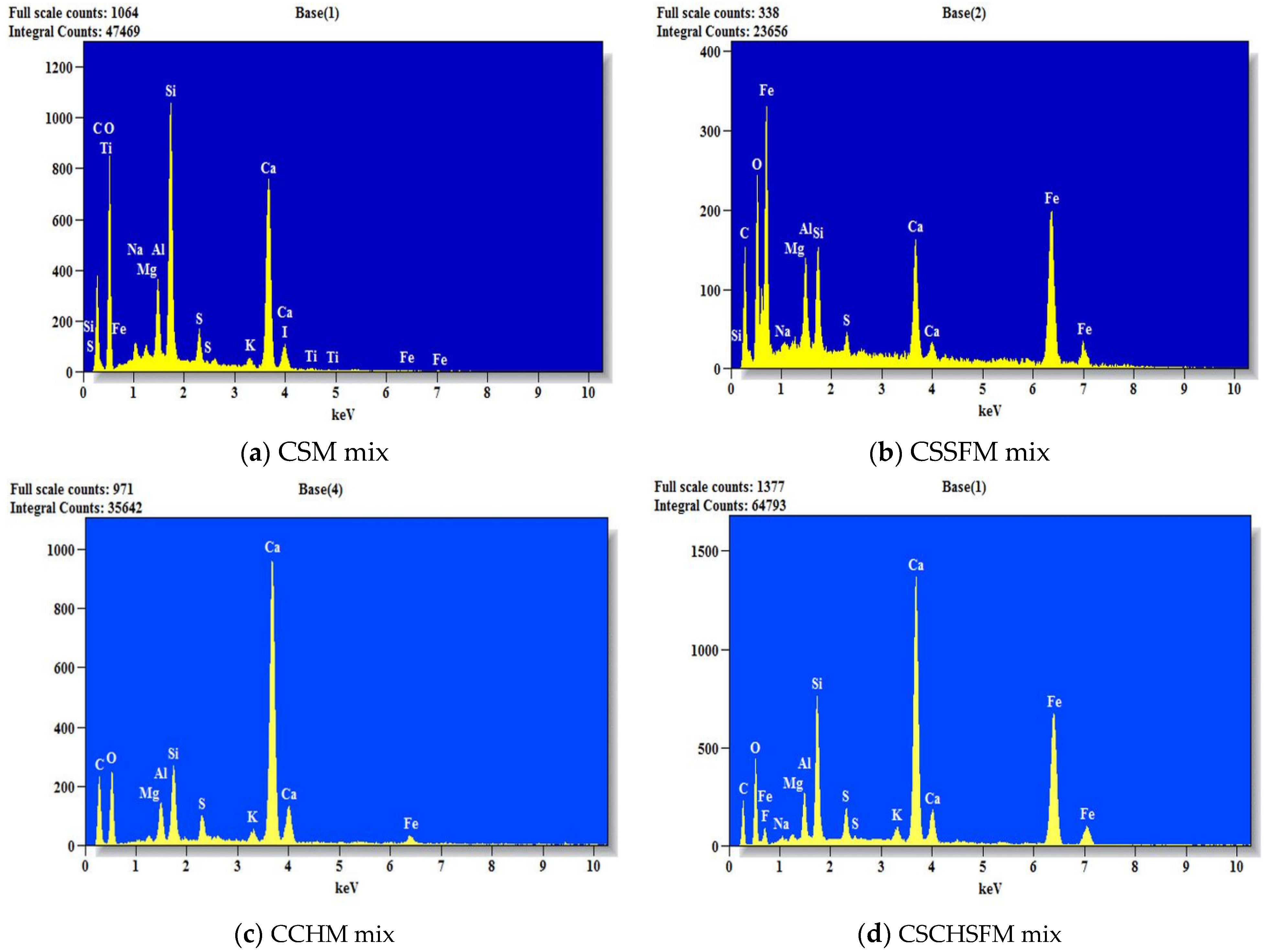
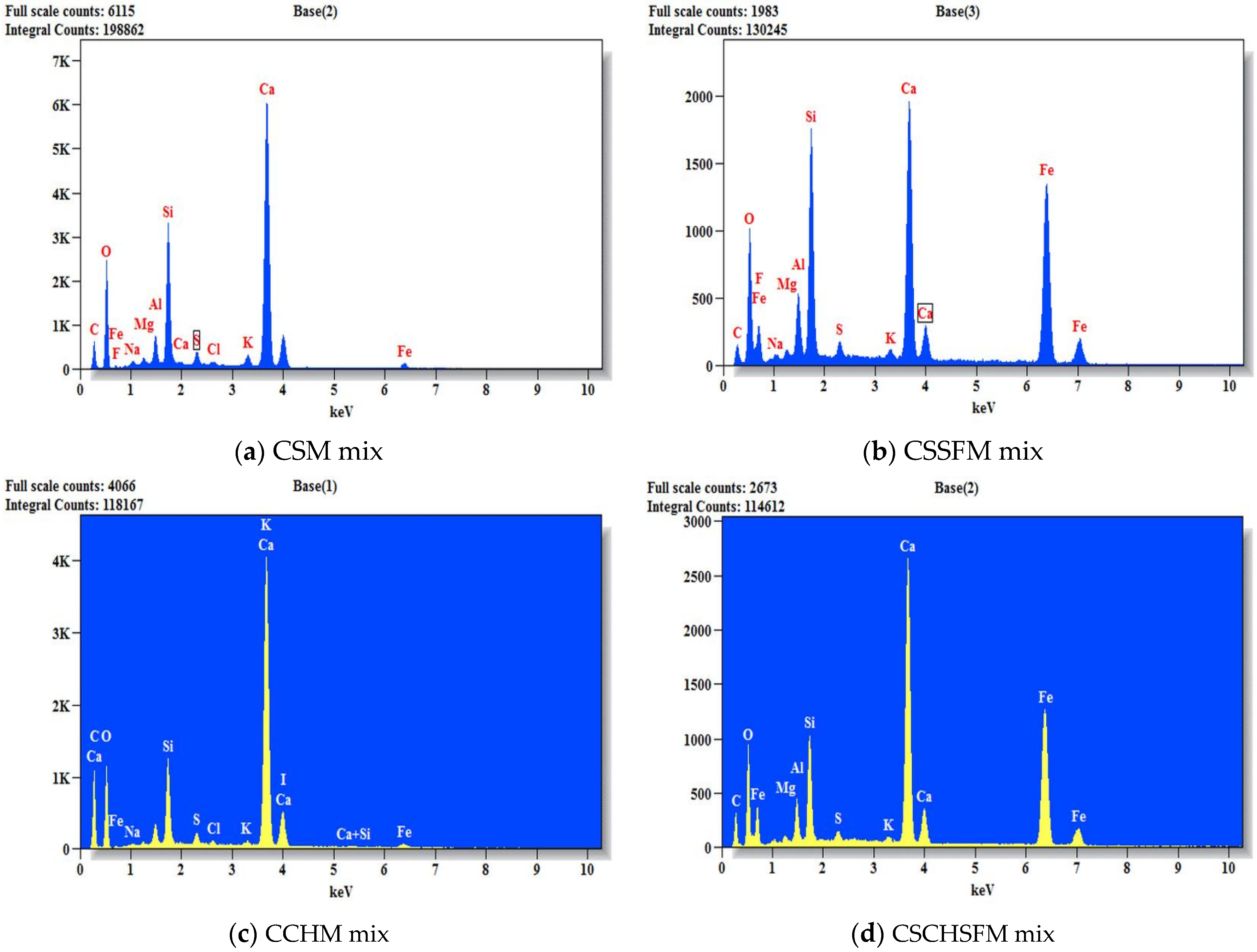
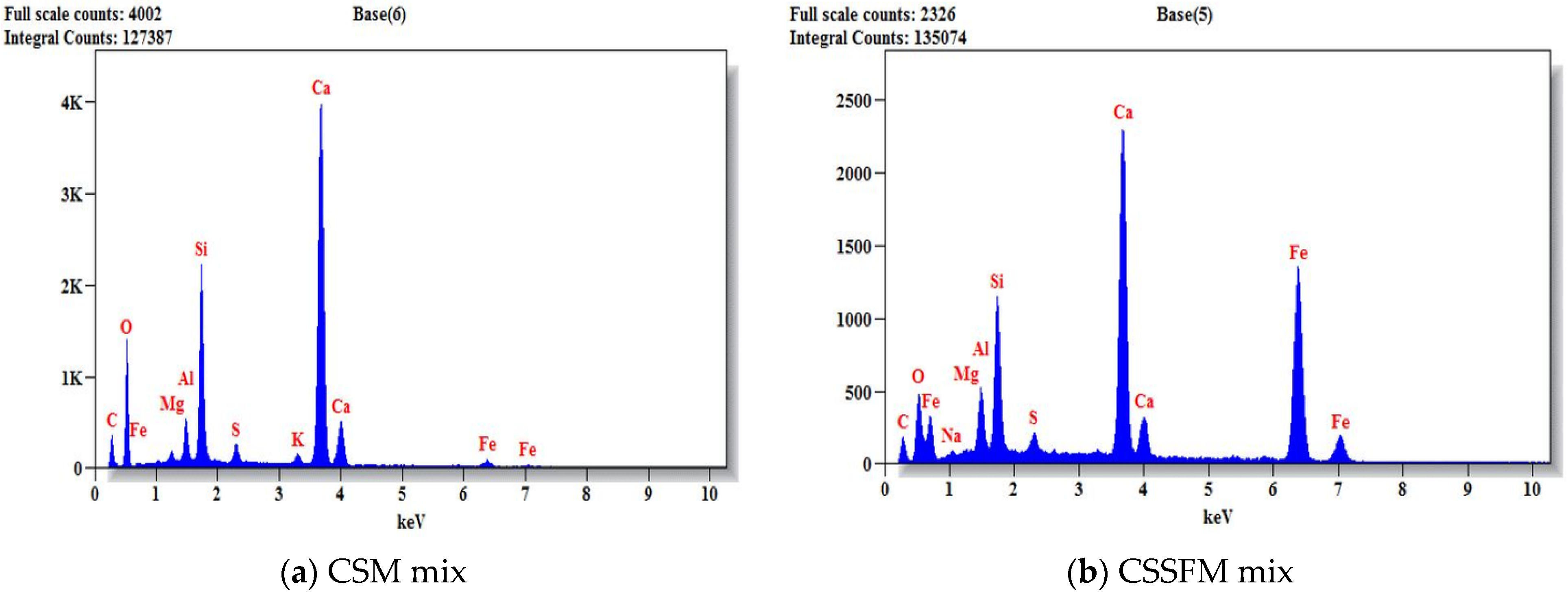

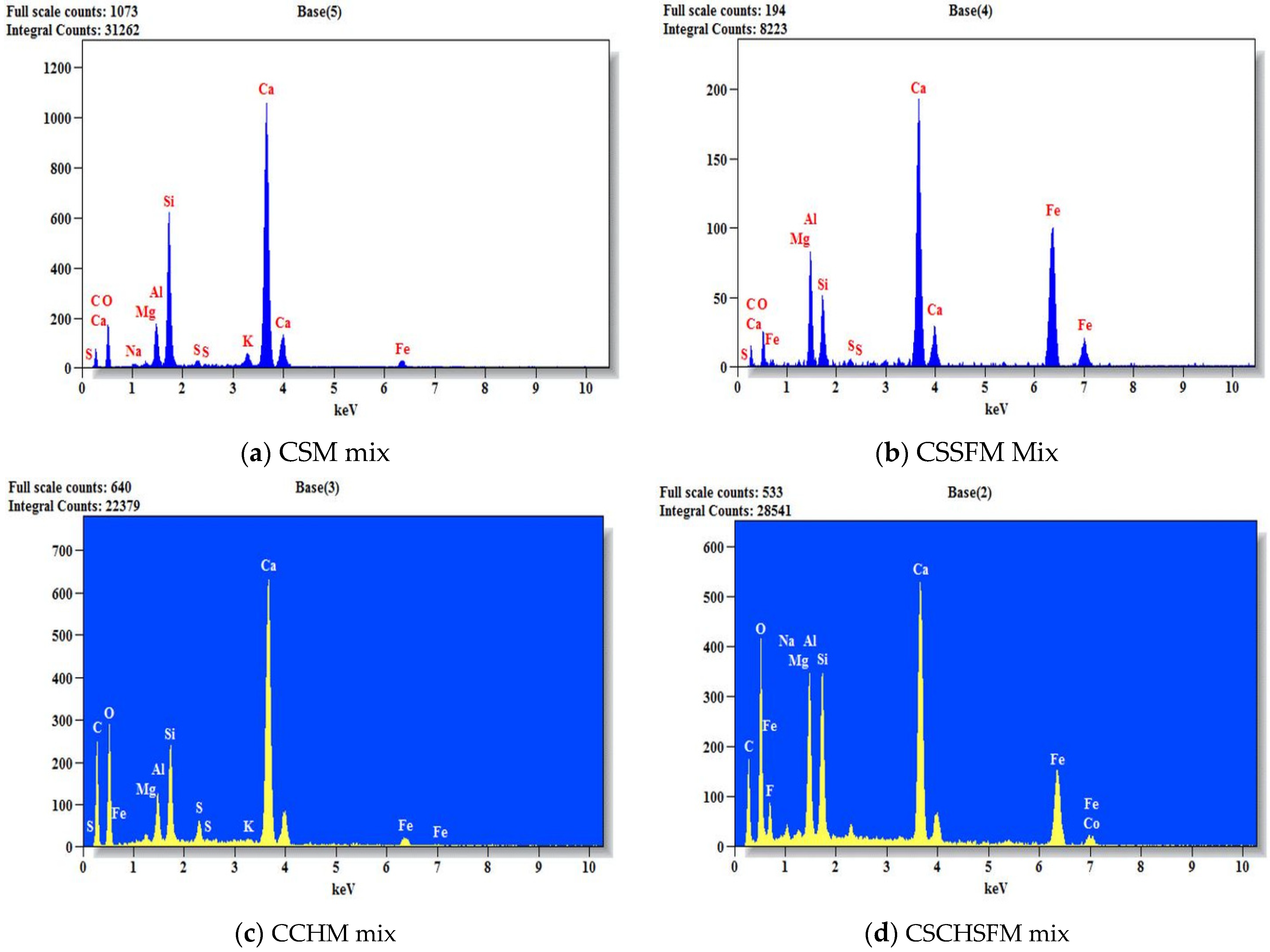
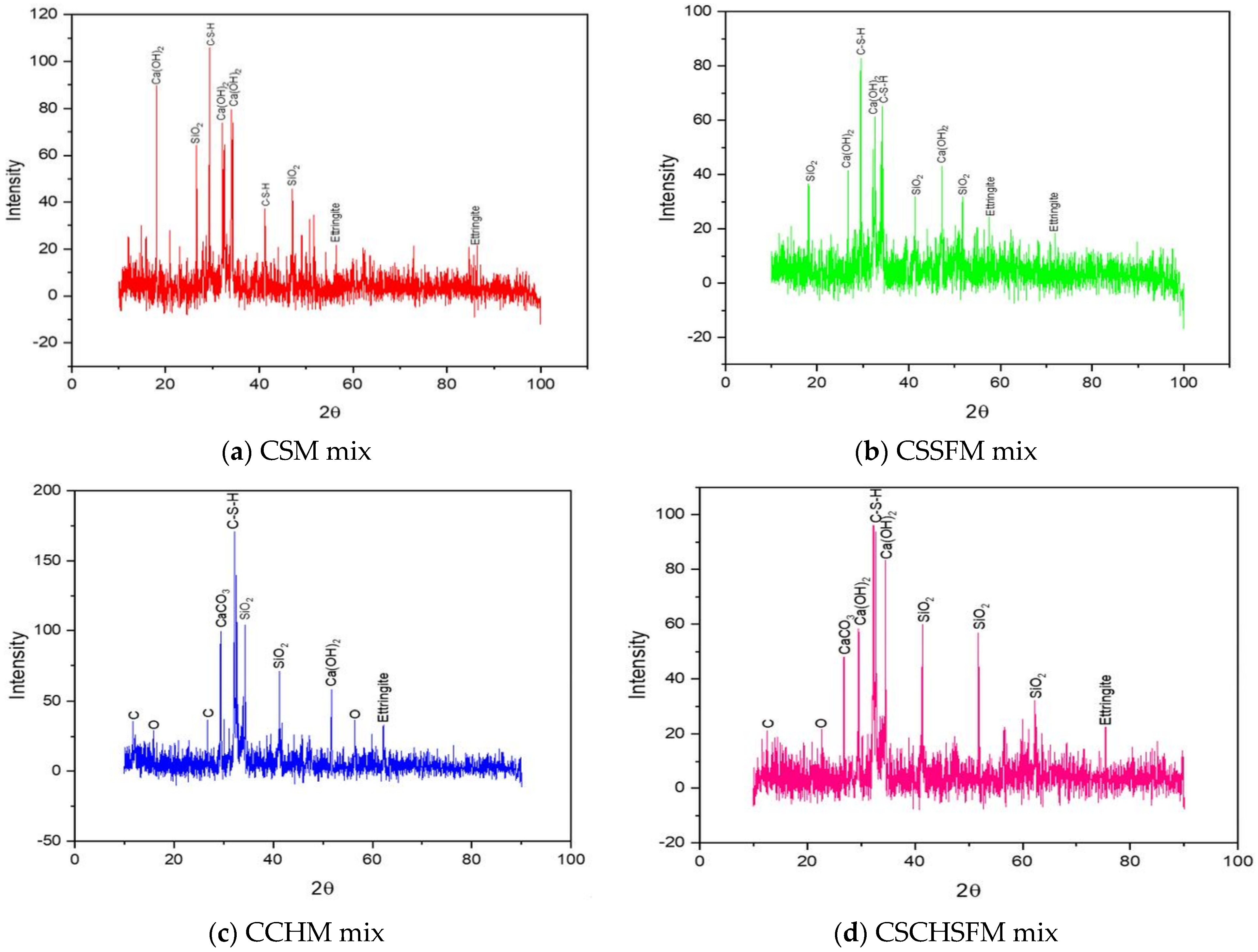


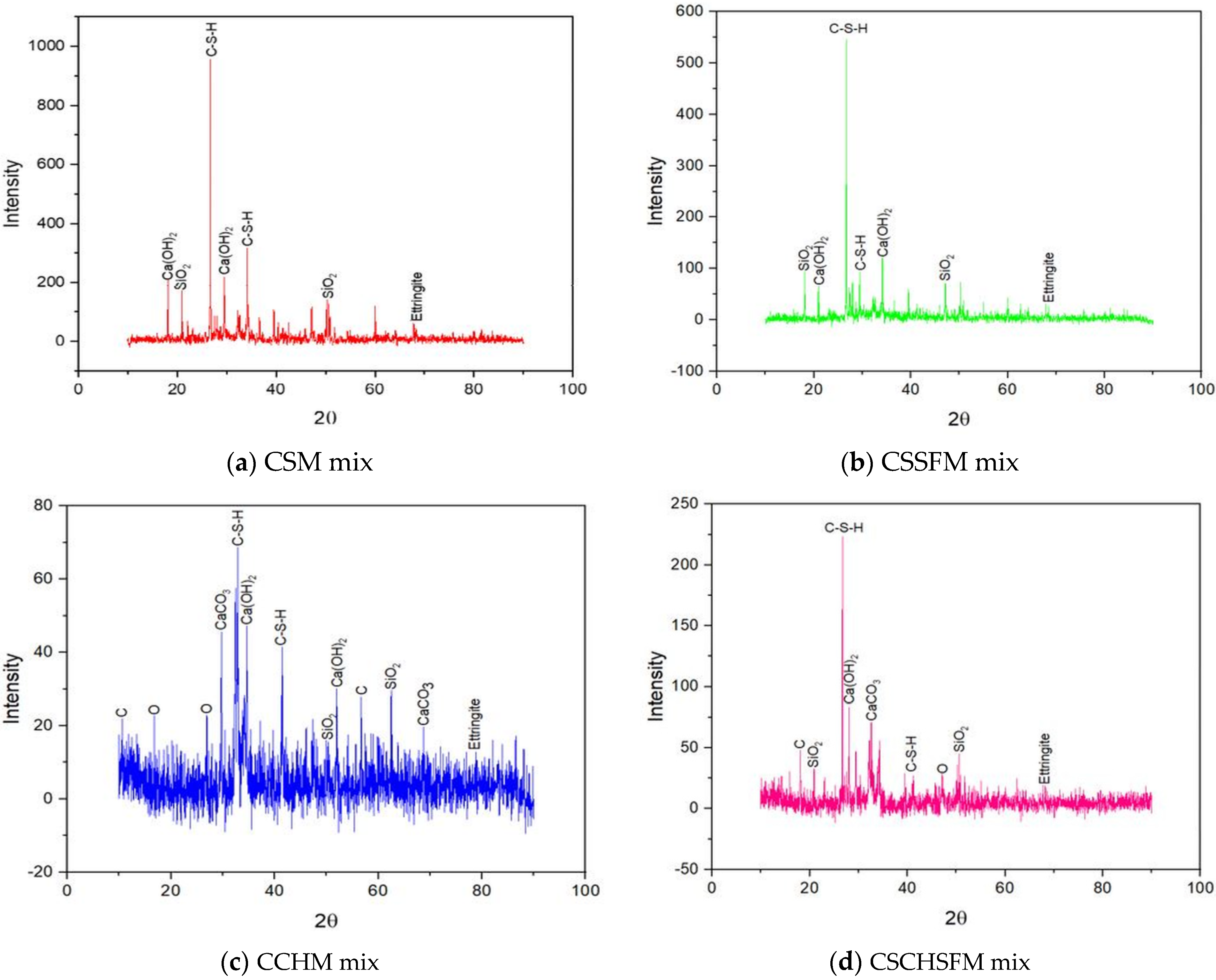
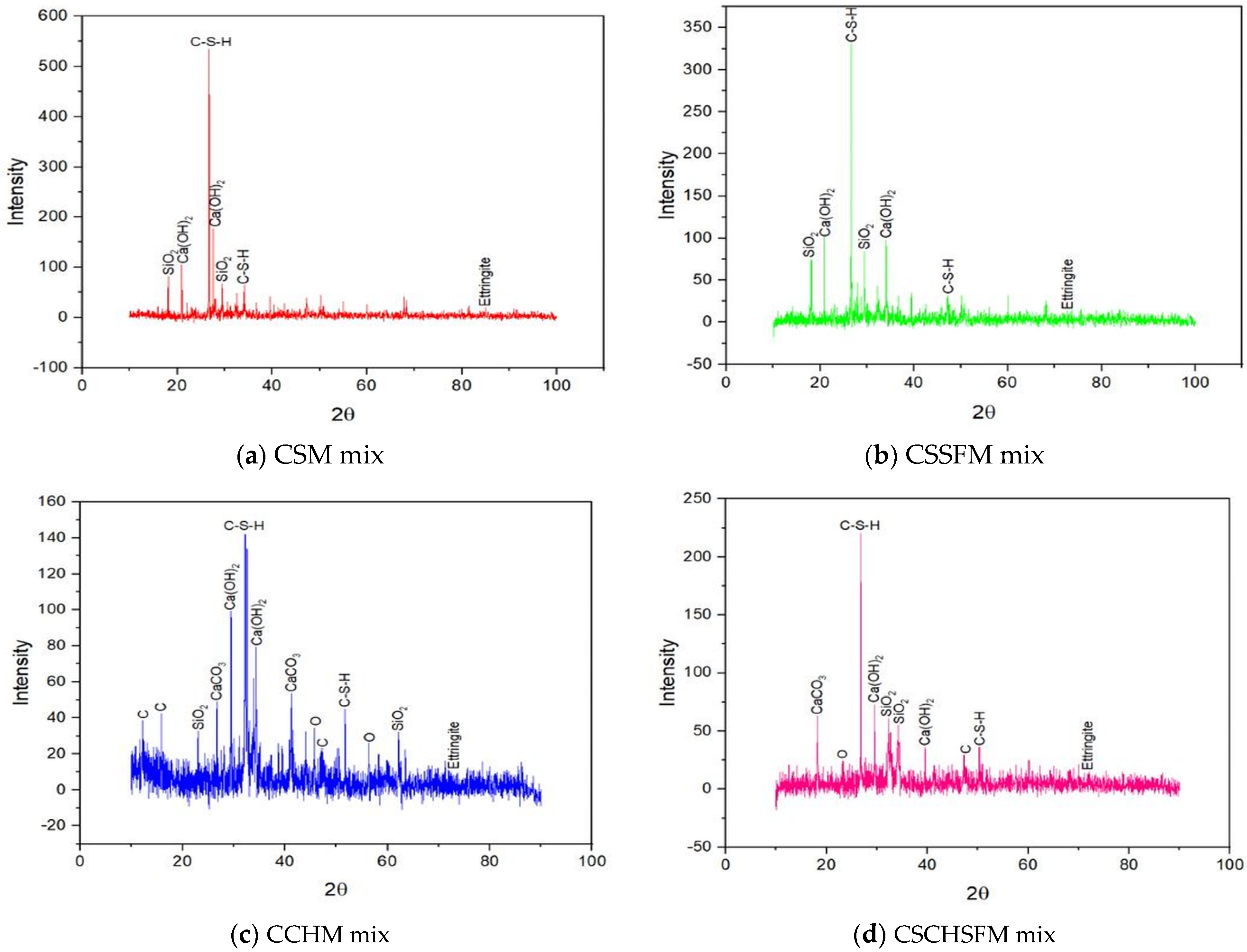
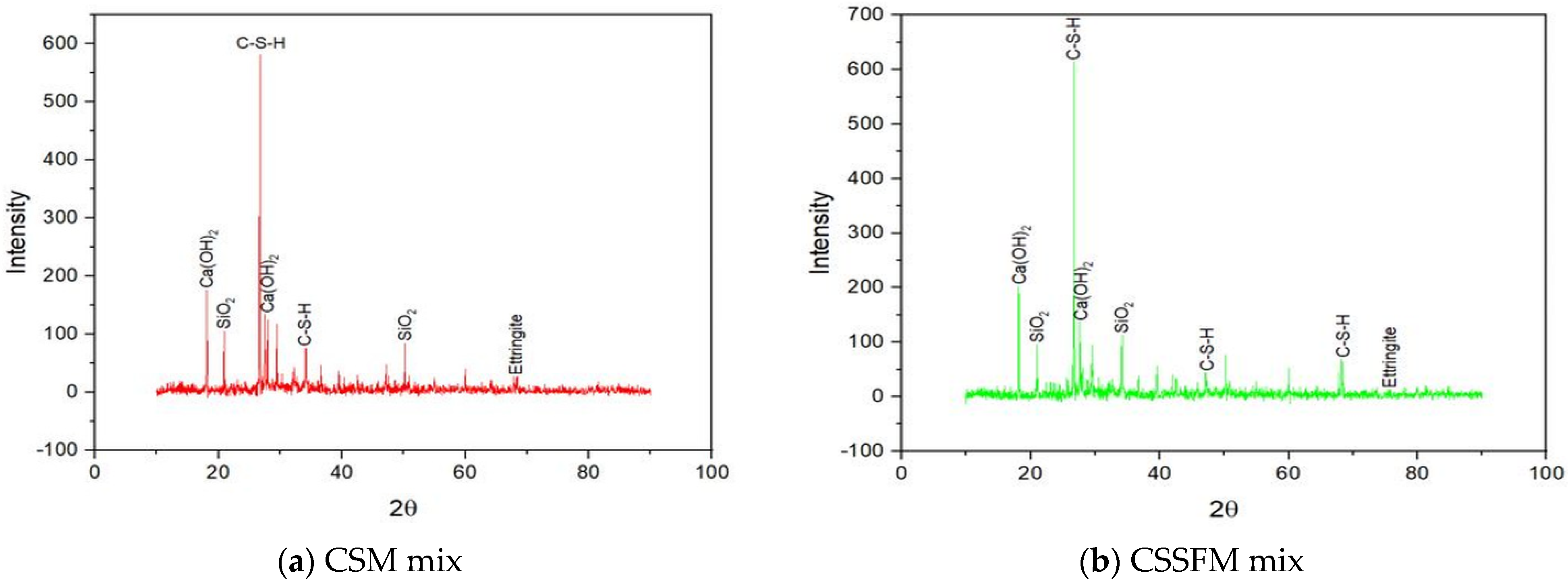
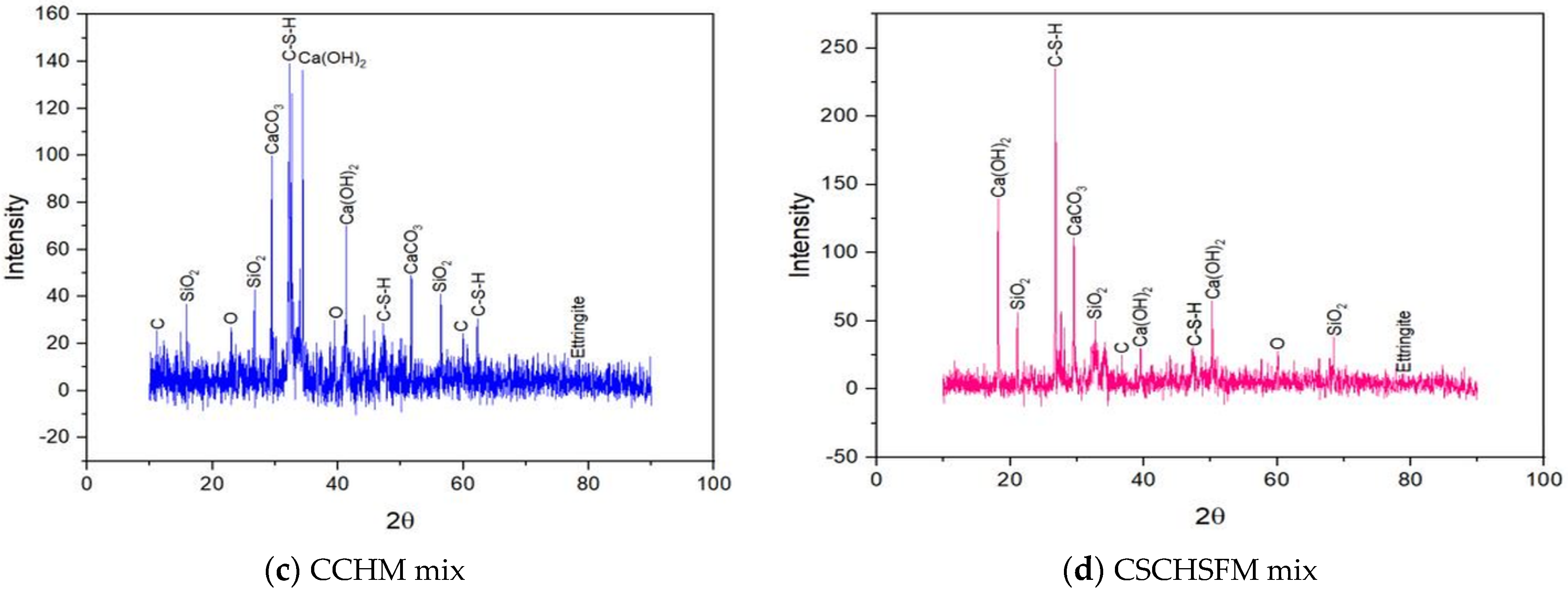
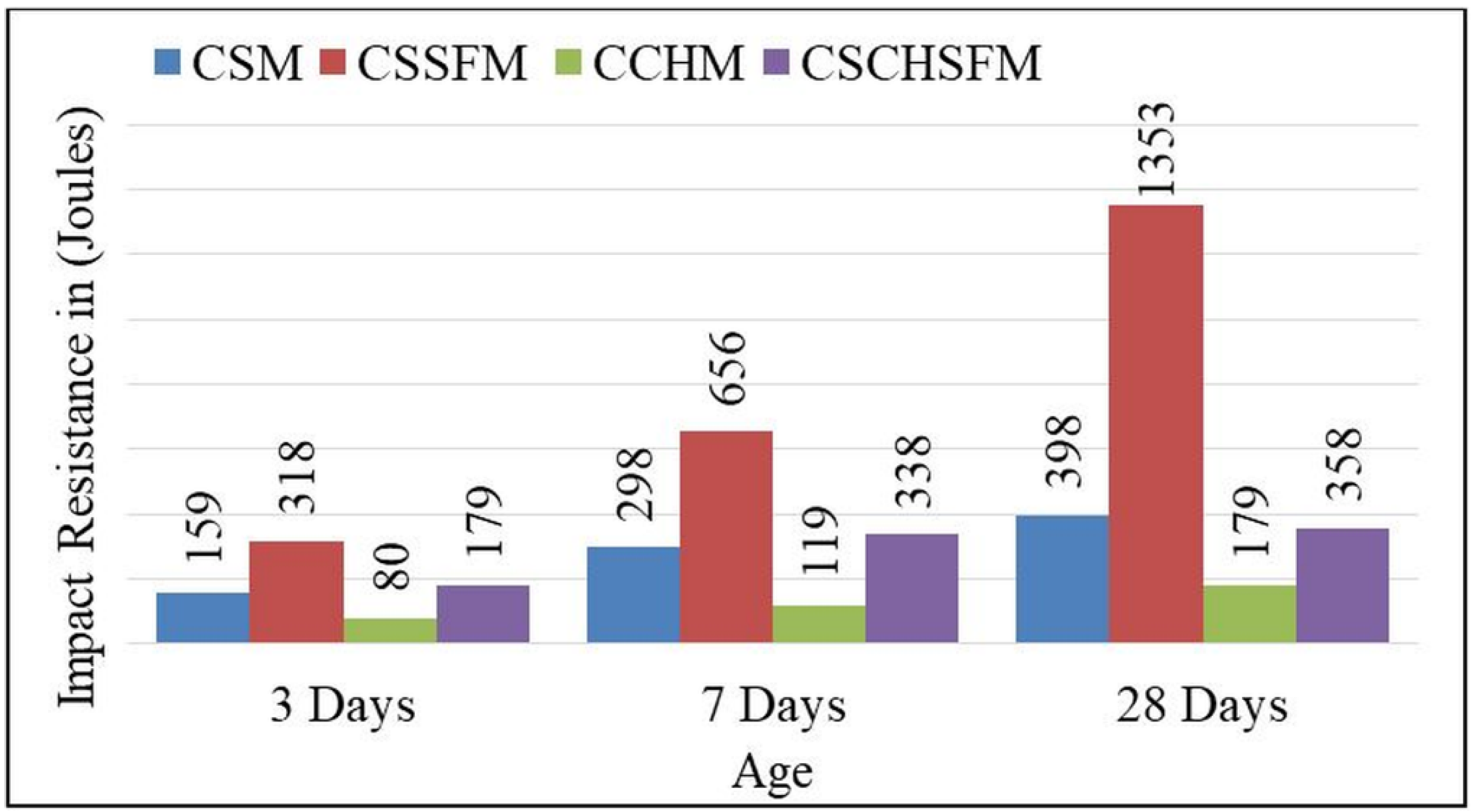
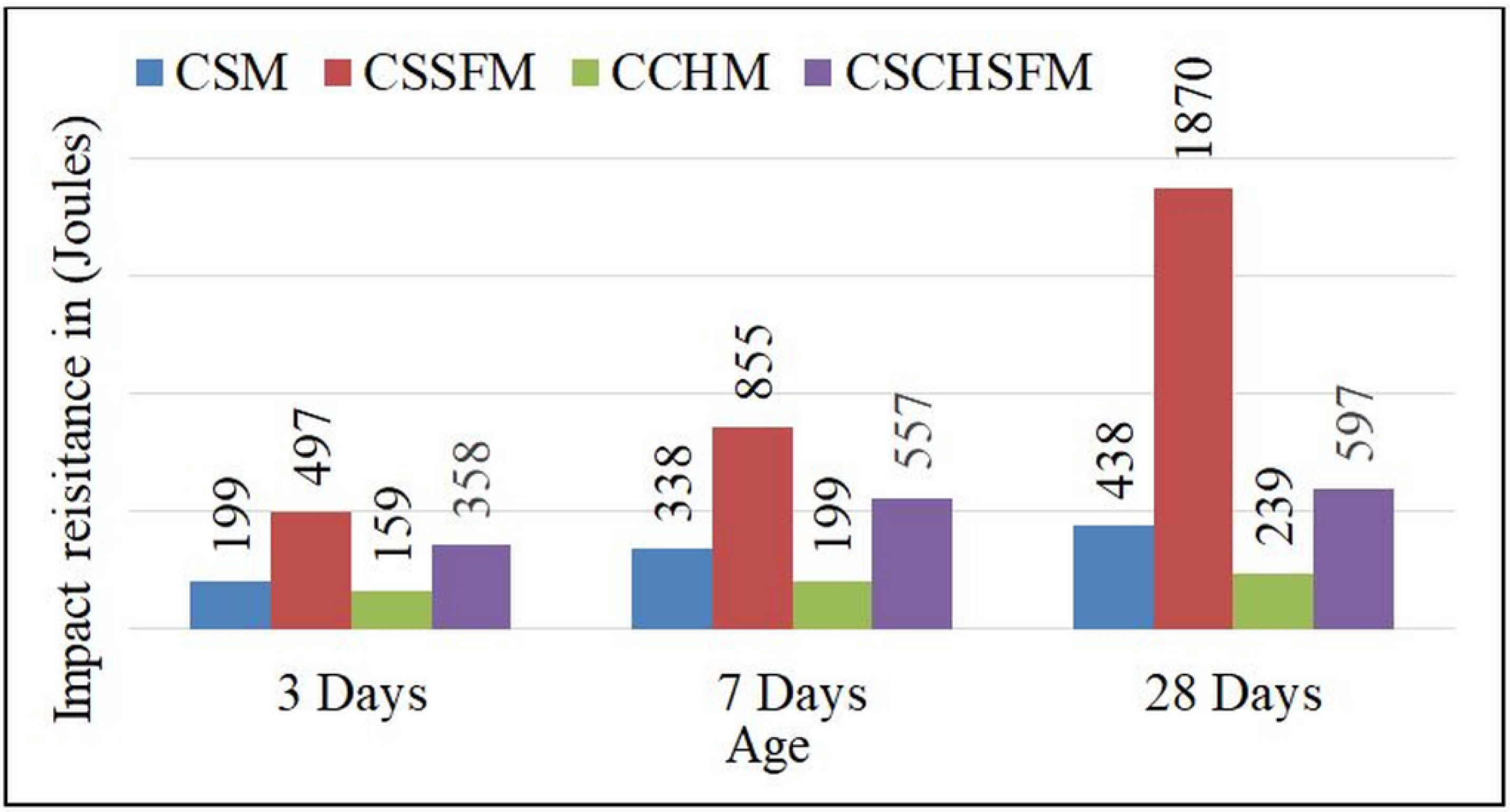

| Properties | River Sand | Coconut Husk |
|---|---|---|
| Specific gravity | 2.55 | 1.14 |
| Bulk density | 1665 kg/m3 | 575 kg/m3 |
| Water absorption | -- | 30% |
| Fineness modulus | 2.98 | 2.53 |
| Mix Proportion (1:3 by Volume) | Cement (%) | Sand (%) | Coconut Husk (%) | w/c Ratio | Steel Fibre (%) | Super Plasticizer (%) |
|---|---|---|---|---|---|---|
| CSM | 100 | 100 | 00 | 0.50 | 00 | 00 |
| CSSFM | 100 | 00 | 0.50 | 06% | 00 | |
| CCHM | 00 | 100 | 0.60 | 00 | 00 | |
| CSCHSFM | 60 | 40 | 0.40 | 06% | 1.5 |
| Chemical Composition (%) | OPC | River Sand | Coconut Husk |
|---|---|---|---|
| Calcium (Ca) | 50.56 | 0.97 | 0.21 |
| Oxygen (O) | 30.52 | 45.07 | 48.30 |
| Silica (Si) | 8.47 | 33.67 | 0.47 |
| Carbon (C) | 7.80 | 8.93 | 49.93 |
| Iron (Fe) | -- | 6.35 | -- |
| Aluminium (Al) | -- | 3.17 | 1.09 |
| Sulphur (S) | 1.39 | -- | -- |
| Magnesium (Mg) | -- | 0.89 | -- |
| Potassium (K) | 1.33 | -- | -- |
| Sodium (Na) | -- | 0.56 | -- |
| Others | 1.15 | 0.38 | -- |
| Mixes | Ratio (Ca:Si) | ||||
|---|---|---|---|---|---|
| Day 0 | One Day 1 | Day 3 | Day 7 | Day 28 | |
| CSM | 2.42 | 2.35 | 1.87 | 1.58 | 1.38 |
| CSSFM | 2.36 | 2.07 | 1.98 | 1.95 | 1.12 |
| CCHM | 2.48 | 2.29 | 2.01 | 1.85 | 1.78 |
| CSCHSFM | 2.23 | 1.96 | 1.89 | 1.40 | 1.27 |
| Compounds (Peak Intensity) | Day 0 | Day 1 | Day 3 | Day 7 | Day 28 |
|---|---|---|---|---|---|
| CSM Mix | |||||
| C-S-H | 100–120 | 250–300 | 900–1000 | 500–600 | 500–600 |
| Ca(OH)2 | 60–80 | 150–200 | 200–300 | 150–200 | 100–200 |
| Ettringite | 20–40 | 25–50 | 0–10 | 0 | 0 |
| CSSFM Mix | |||||
| C-S-H | 80–100 | 100–200 | 500–600 | 300–350 | 600–700 |
| Ca(OH)2 | 60–70 | 50–100 | 100–150 | 50–100 | 200–300 |
| Ettringite | 10–20 | 10–50 | 0–10 | 0 | 0 |
| CCHM Mix | |||||
| C-S-H | 150–200 | 70–80 | 70–80 | 140–160 | 140–160 |
| Ca(OH)2 | 50–100 | 50–60 | 40–50 | 100–120 | 120–140 |
| Ettringite | 25–50 | 10–20 | 10–20 | 10–20 | 0–10 |
| CSCHSFM Mix | |||||
| C-S-H | 90–100 | 150–200 | 200–250 | 200–250 | 200–250 |
| Ca(OH)2 | 80–90 | 100–150 | 50–100 | 50–100 | 100–150 |
| Ettringite | 20–30 | 0–50 | 0–25 | 0–10 | 0 |
| Test Age | CSM Mix | CSSFM Mix | CCHM Mix | CSCHSFM | ||||
|---|---|---|---|---|---|---|---|---|
| Density (kg/m3) | Strength (N/mm2) | Density (kg/m3) | Strength (N/mm2) | Density (kg/m3) | Strength (N/mm2) | Density (kg/m3) | Strength (N/mm2) | |
| Day 3 | 2260 | 23.20 | 2295 | 28.45 | 1385 | 2.35 | 2170 | 22.15 |
| Day 7 | 2275 | 28.35 | 2310 | 35.30 | 1390 | 2.60 | 2175 | 29.50 |
| Day 28 | 2310 | 37.00 | 2340 | 40.25 | 1440 | 5.90 | 2180 | 36.10 |
| Test Age | CSM Mix | CSSFM Mix | CCHM Mix | CSCHSFM Mix | ||||
|---|---|---|---|---|---|---|---|---|
| Splitting Tensile Strength (N/mm2) | ||||||||
| Day 3 | 2.29 | 4.17 | 0.67 | 1.85 | ||||
| Day 7 | 2.51 | 4.39 | 0.95 | 2.45 | ||||
| Day 28 | 4.48 | 5.65 | 1.36 | 3.23 | ||||
| Flexural Strength (N/mm2) | ||||||||
| Day 3 | 14.76 | 18.83 | 13.90 | 15.36 | ||||
| Day 7 | 18.77 | 22.93 | 16.67 | 20.97 | ||||
| Day 28 | 22.46 | 25.29 | 17.19 | 23.10 | ||||
| Impact Resistance in Joules | ||||||||
| Initial Crack | Final Crack | Initial Crack | Final Crack | Initial Crack | Final Crack | Initial Crack | Final Crack | |
| Day 3 | 159 | 199 | 318 | 497 | 80 | 159 | 179 | 358 |
| Day 7 | 298 | 338 | 656 | 855 | 119 | 199 | 338 | 557 |
| Day 28 | 398 | 438 | 1353 | 1870 | 179 | 239 | 358 | 597 |
| Characteristics | River Sand | Coconut Husk |
|---|---|---|
| Surface structure | Smooth texture | Rough texture |
| Oversizing | It cannot be avoided | Can be avoided |
| FTIR pattern | Different patterns | |
| Bonding nature | Different patterns | |
| Cement hydration processes | Not affected | |
| Ratio (Ca:Si) at 28 days for mortar | 1.38 | 2.24 |
| Workability | Increases | Decreases |
| Mortar density | More | Less |
| Mortar strength | More | Less |
Disclaimer/Publisher’s Note: The statements, opinions and data contained in all publications are solely those of the individual author(s) and contributor(s) and not of MDPI and/or the editor(s). MDPI and/or the editor(s) disclaim responsibility for any injury to people or property resulting from any ideas, methods, instructions or products referred to in the content. |
© 2023 by the authors. Licensee MDPI, Basel, Switzerland. This article is an open access article distributed under the terms and conditions of the Creative Commons Attribution (CC BY) license (https://creativecommons.org/licenses/by/4.0/).
Share and Cite
Kumarasamy, K.; Kandasamy, G.; Ramasamy, A. Elucidation of Microstructural and Mechanical Properties of Coconut Husk Mortar as a Sustainable Building Material for Ferrocement. Sustainability 2023, 15, 3995. https://doi.org/10.3390/su15053995
Kumarasamy K, Kandasamy G, Ramasamy A. Elucidation of Microstructural and Mechanical Properties of Coconut Husk Mortar as a Sustainable Building Material for Ferrocement. Sustainability. 2023; 15(5):3995. https://doi.org/10.3390/su15053995
Chicago/Turabian StyleKumarasamy, Kalaivani, Gunasekaran Kandasamy, and Annadurai Ramasamy. 2023. "Elucidation of Microstructural and Mechanical Properties of Coconut Husk Mortar as a Sustainable Building Material for Ferrocement" Sustainability 15, no. 5: 3995. https://doi.org/10.3390/su15053995
APA StyleKumarasamy, K., Kandasamy, G., & Ramasamy, A. (2023). Elucidation of Microstructural and Mechanical Properties of Coconut Husk Mortar as a Sustainable Building Material for Ferrocement. Sustainability, 15(5), 3995. https://doi.org/10.3390/su15053995








